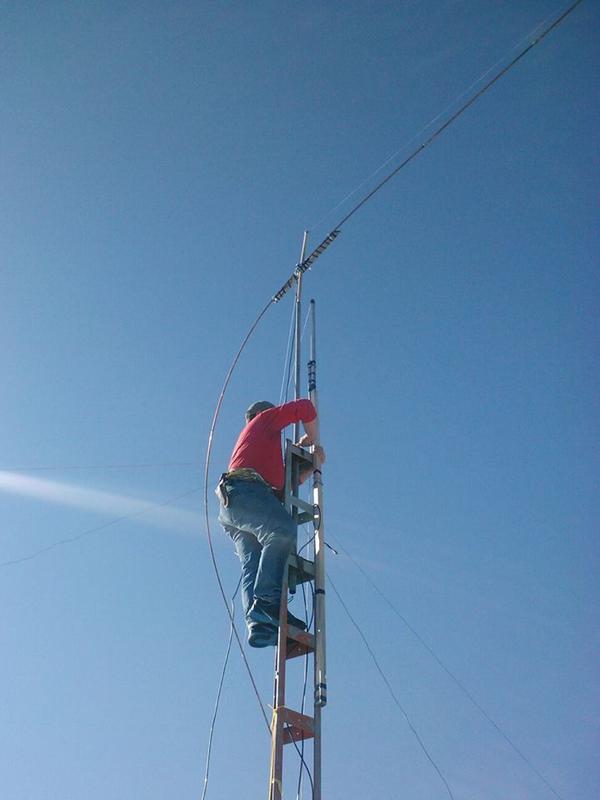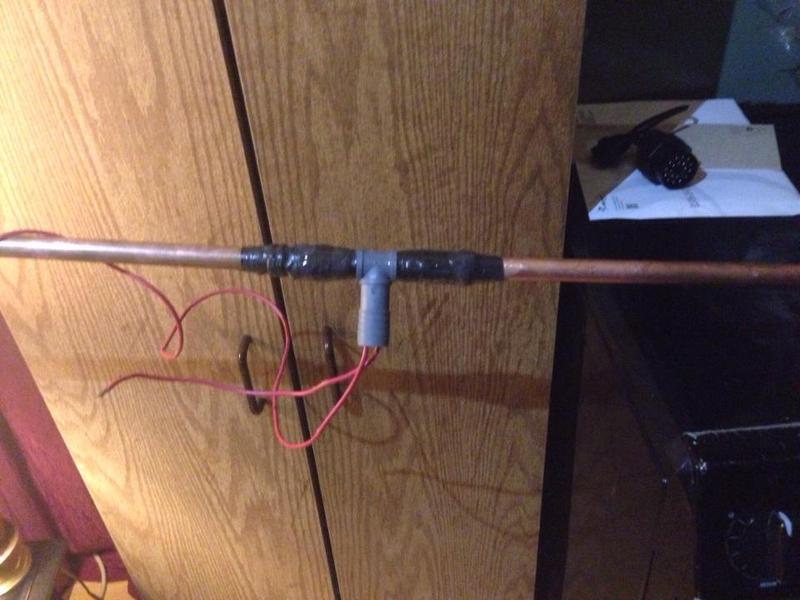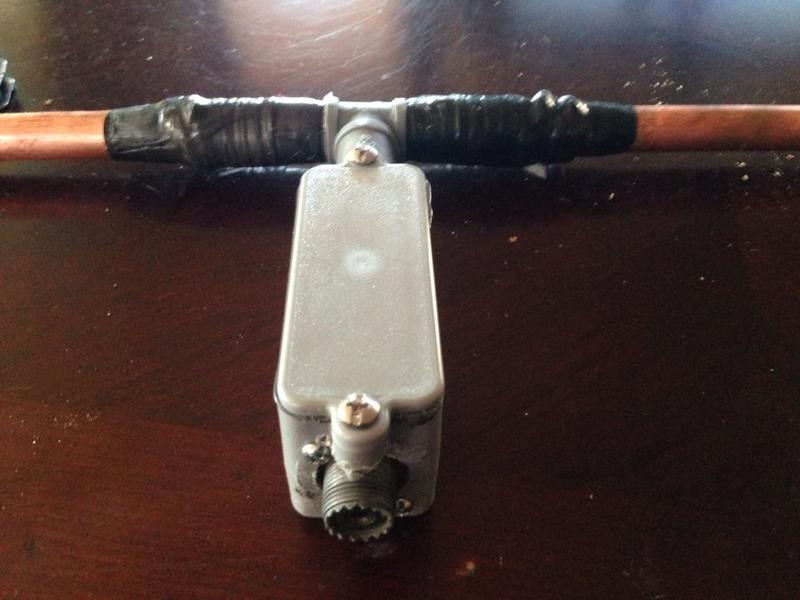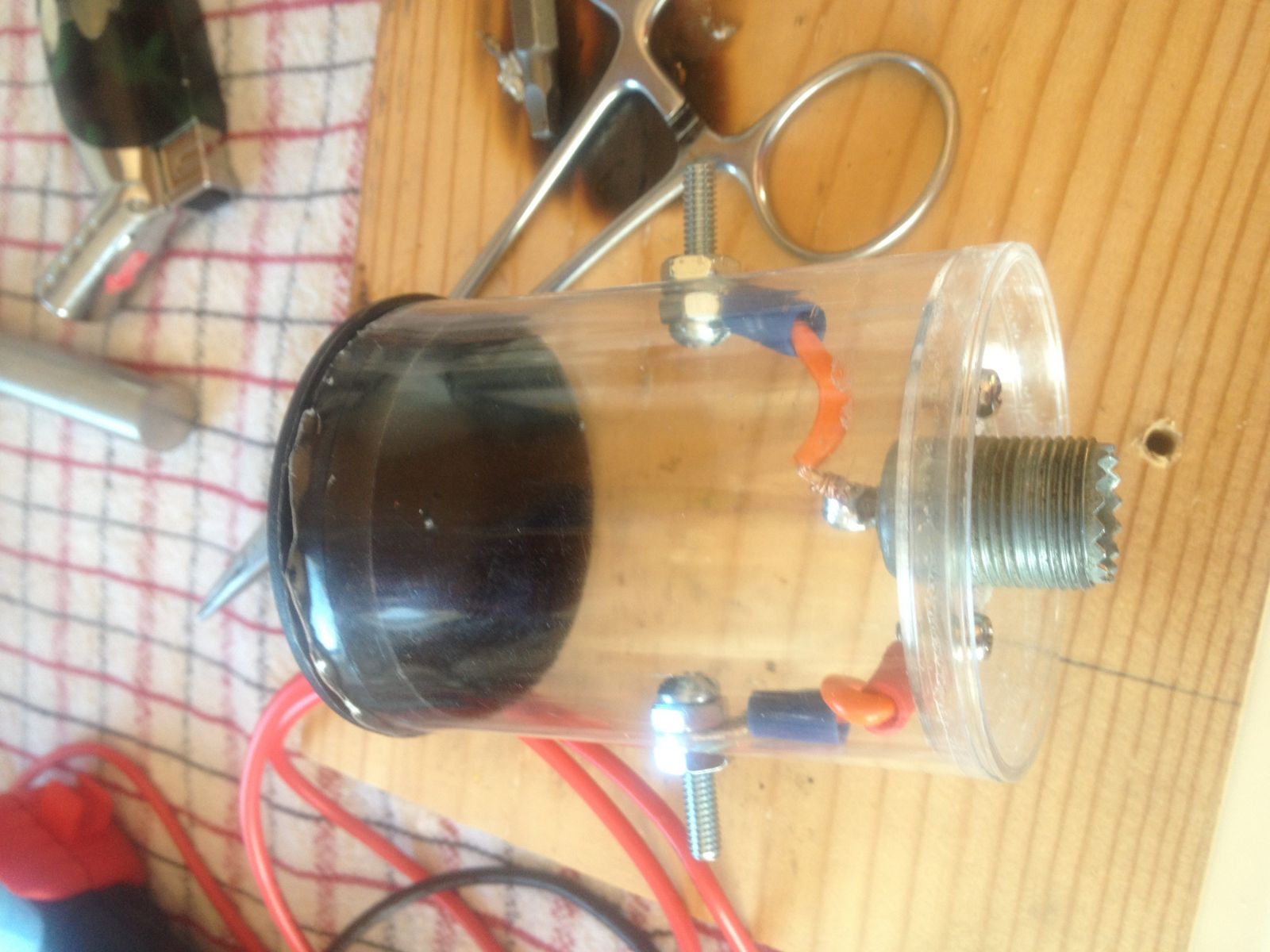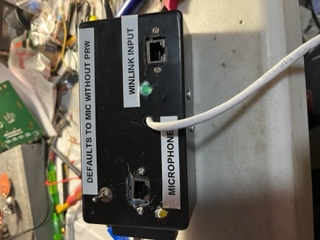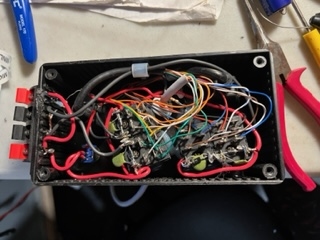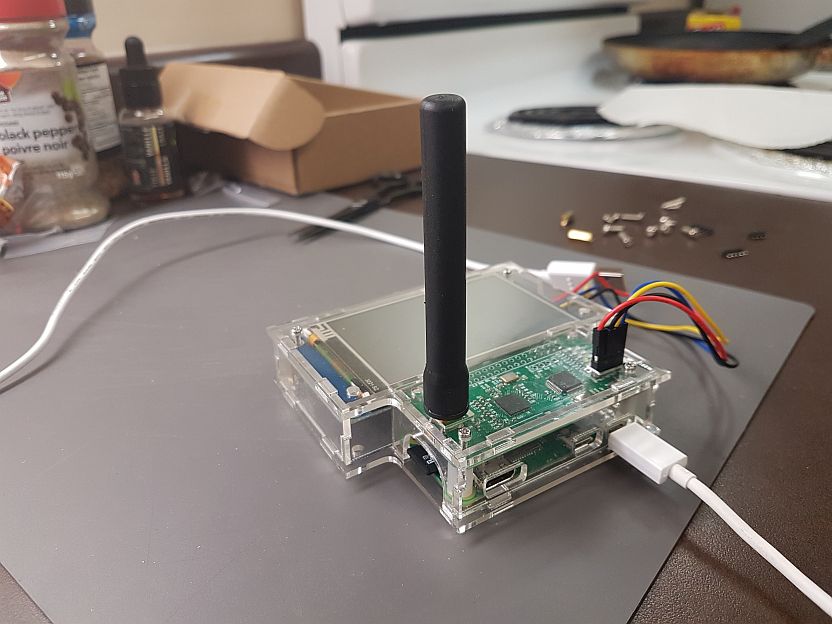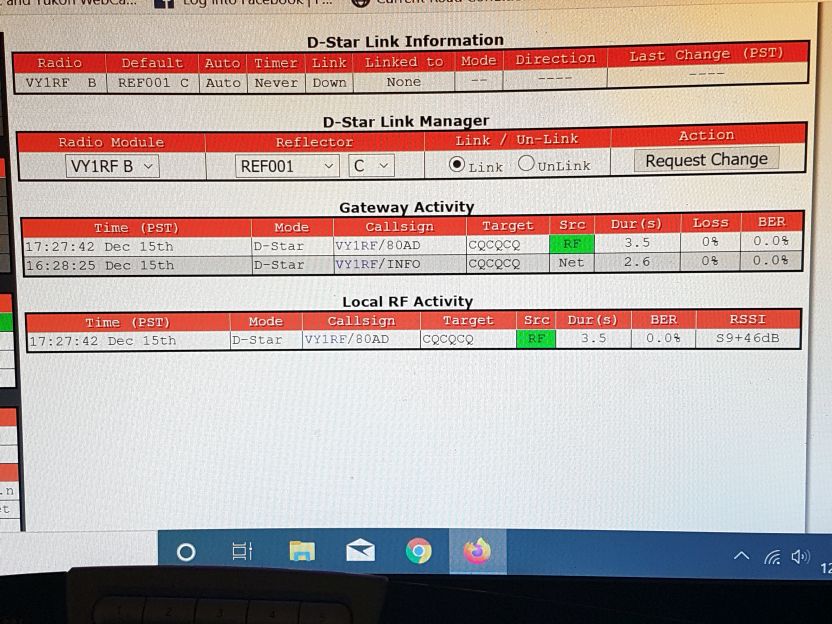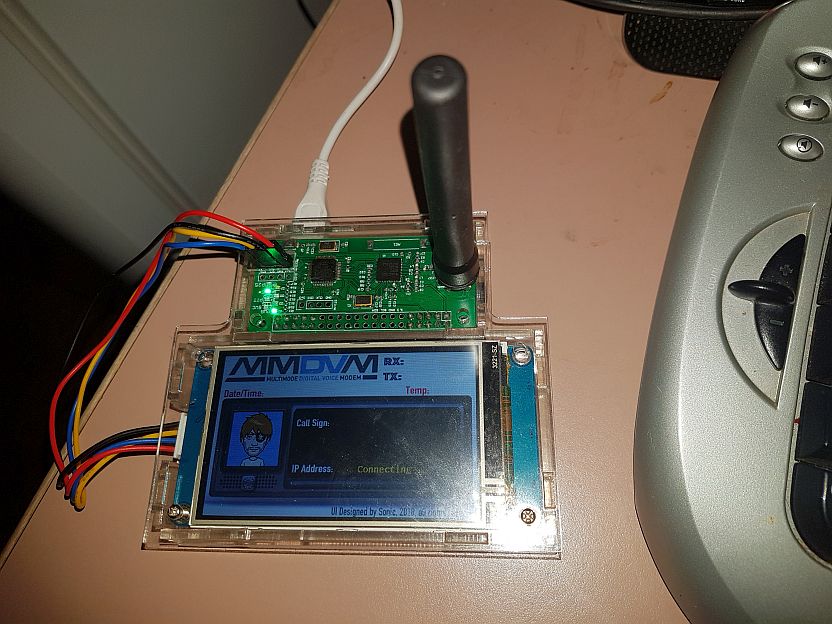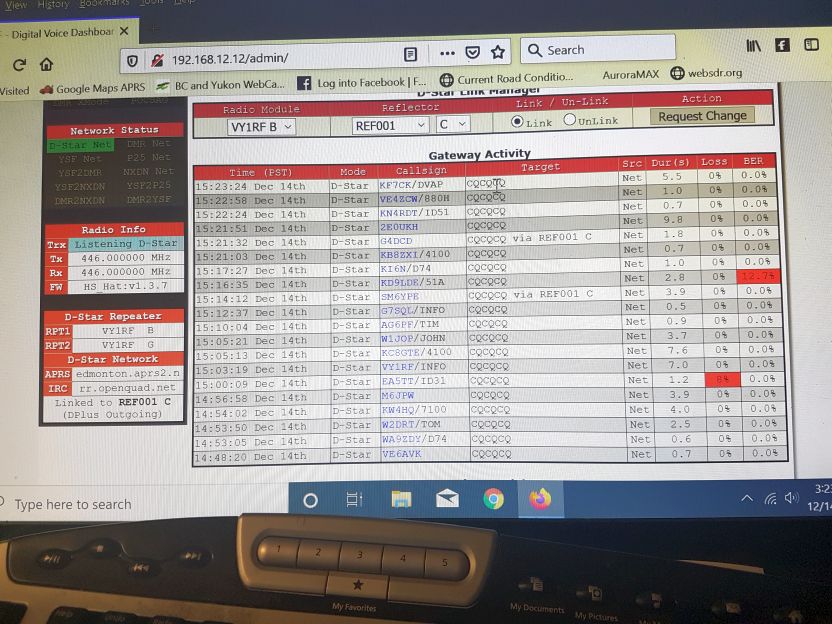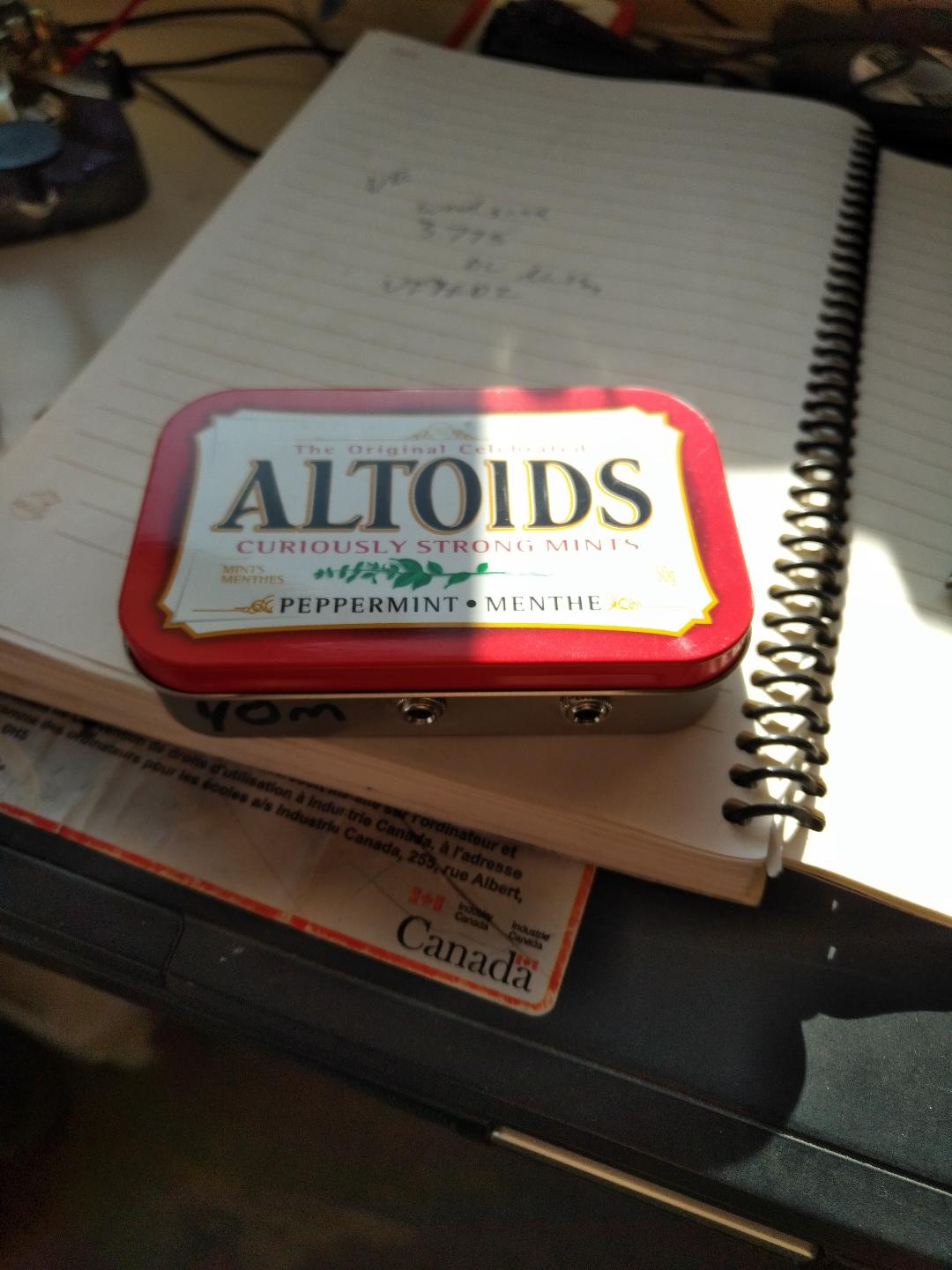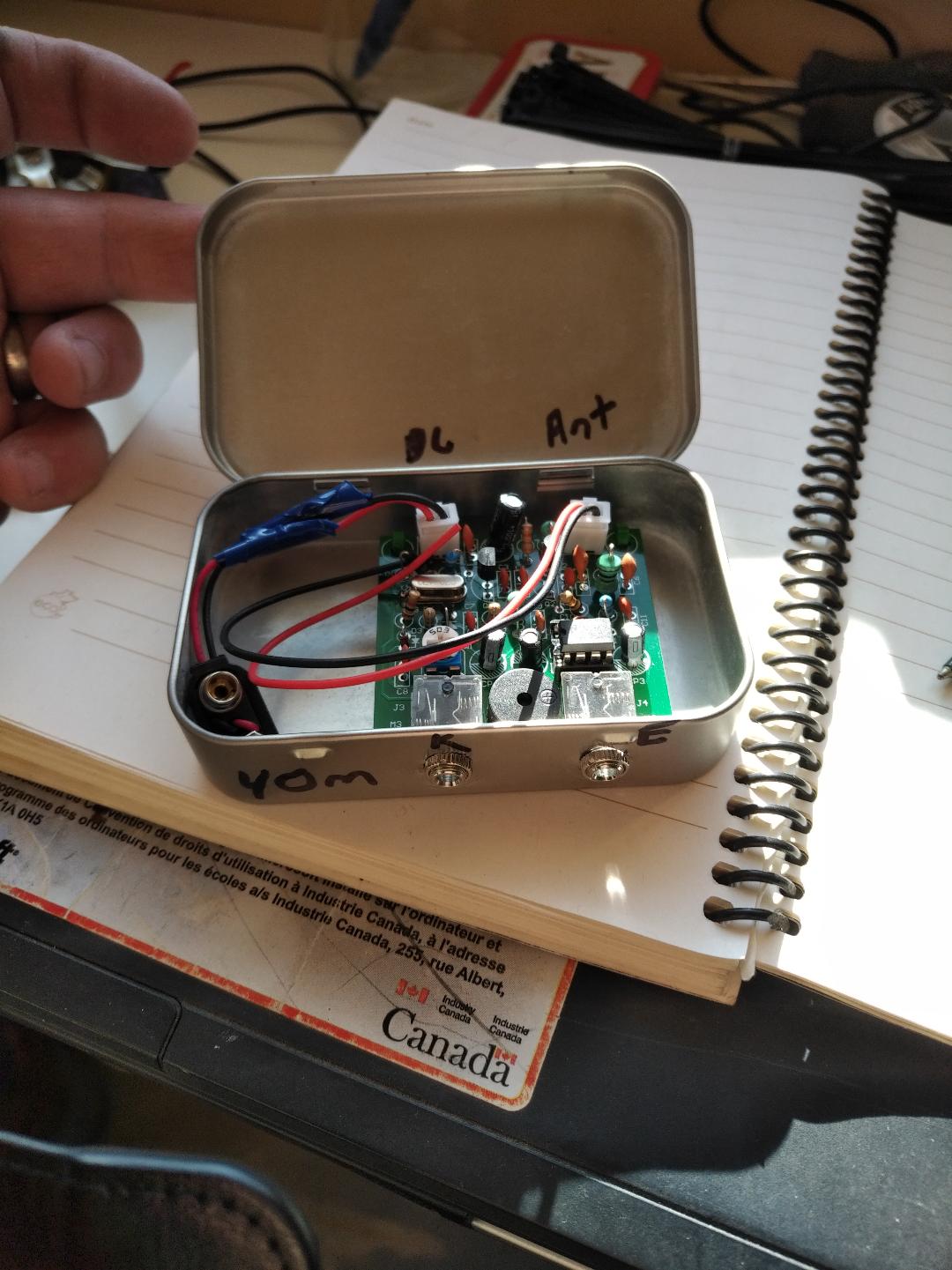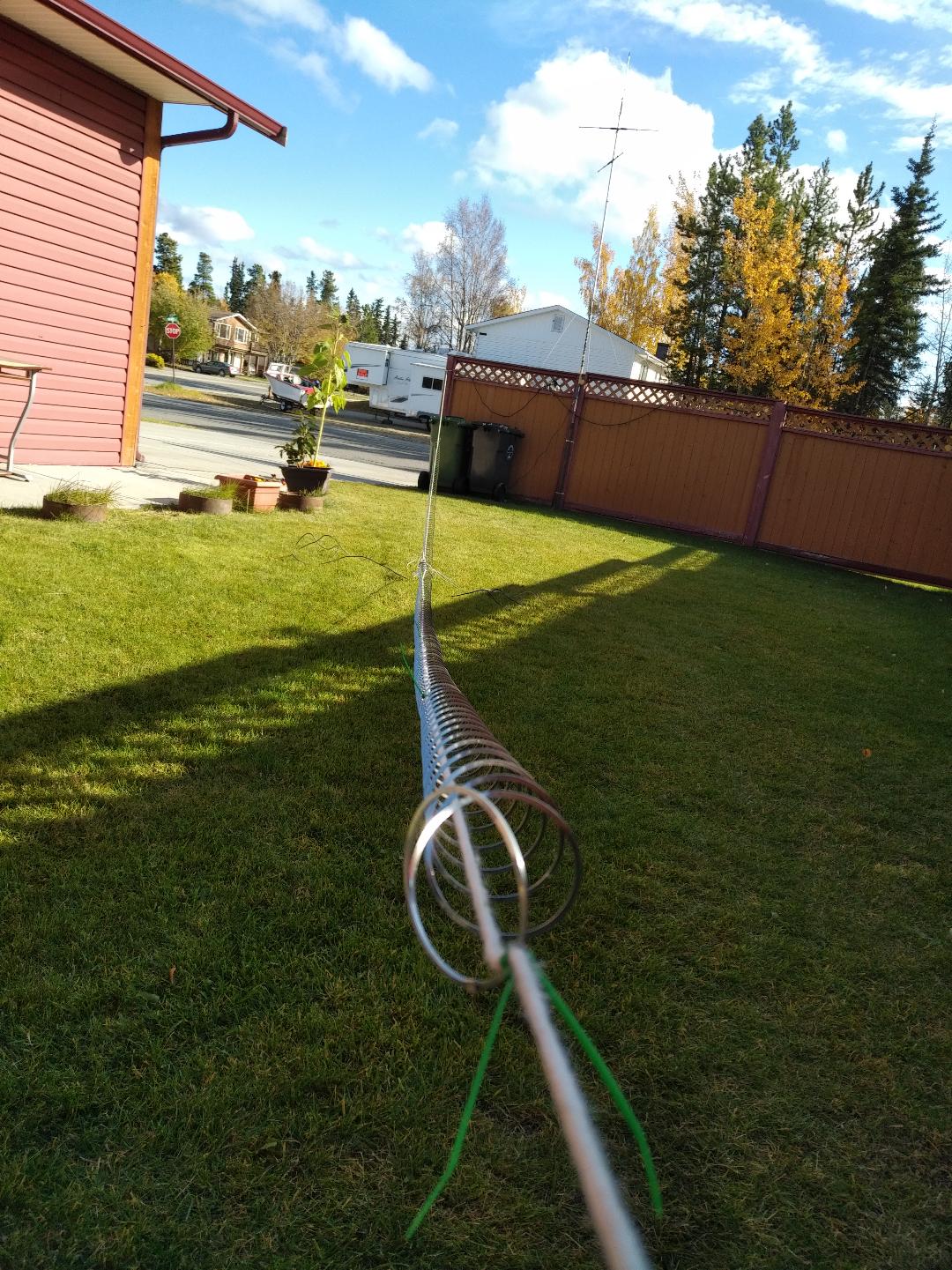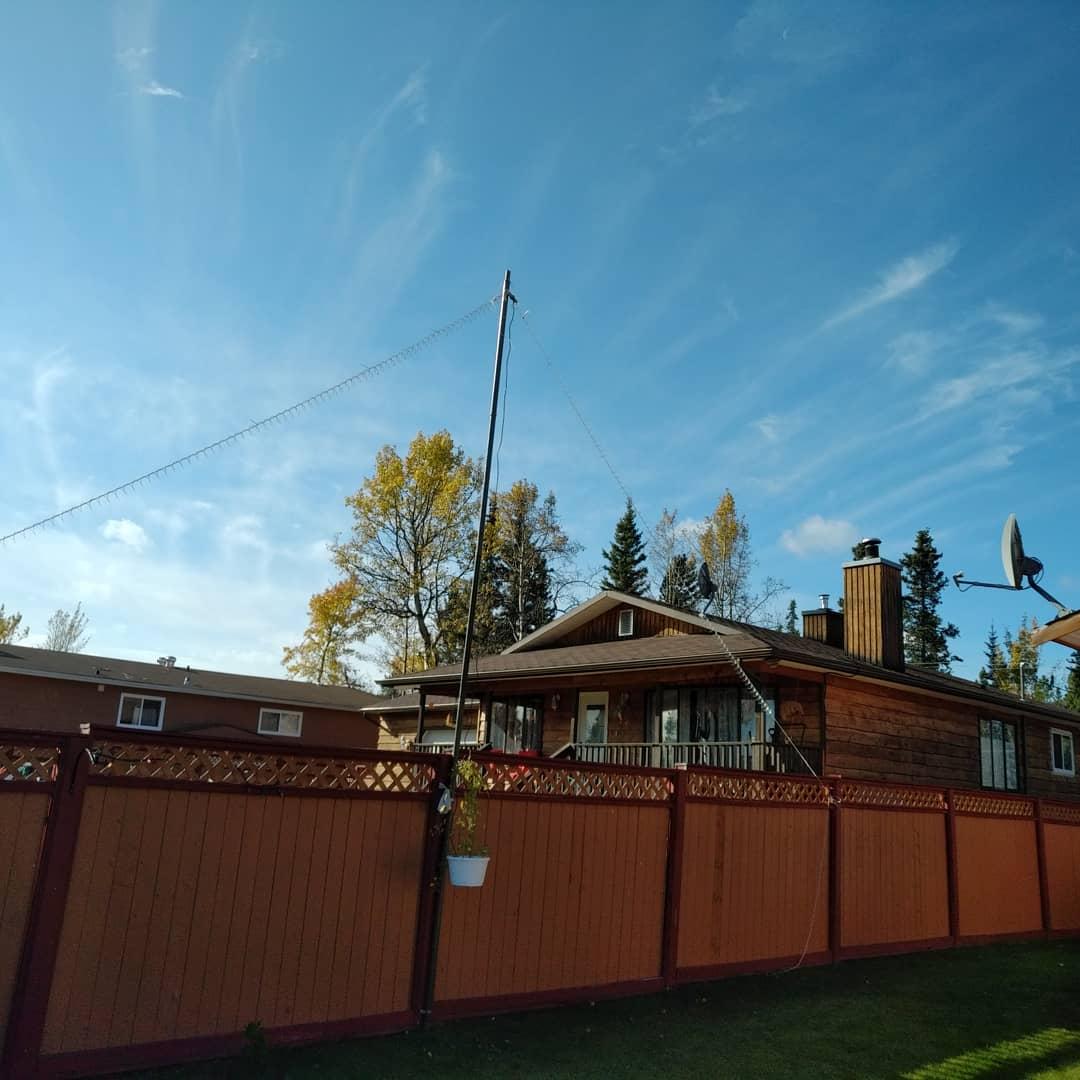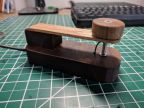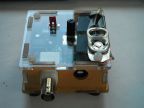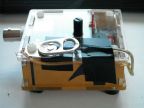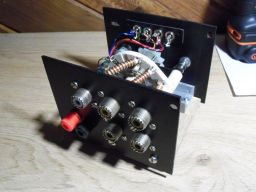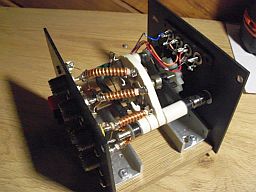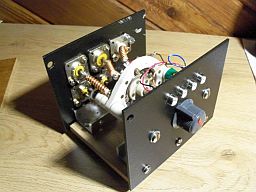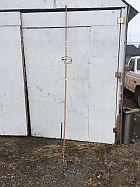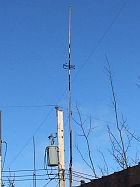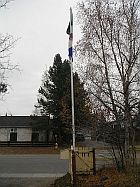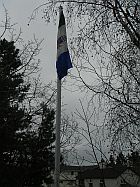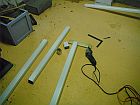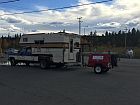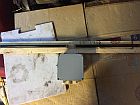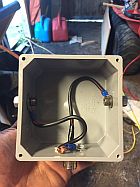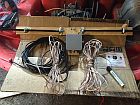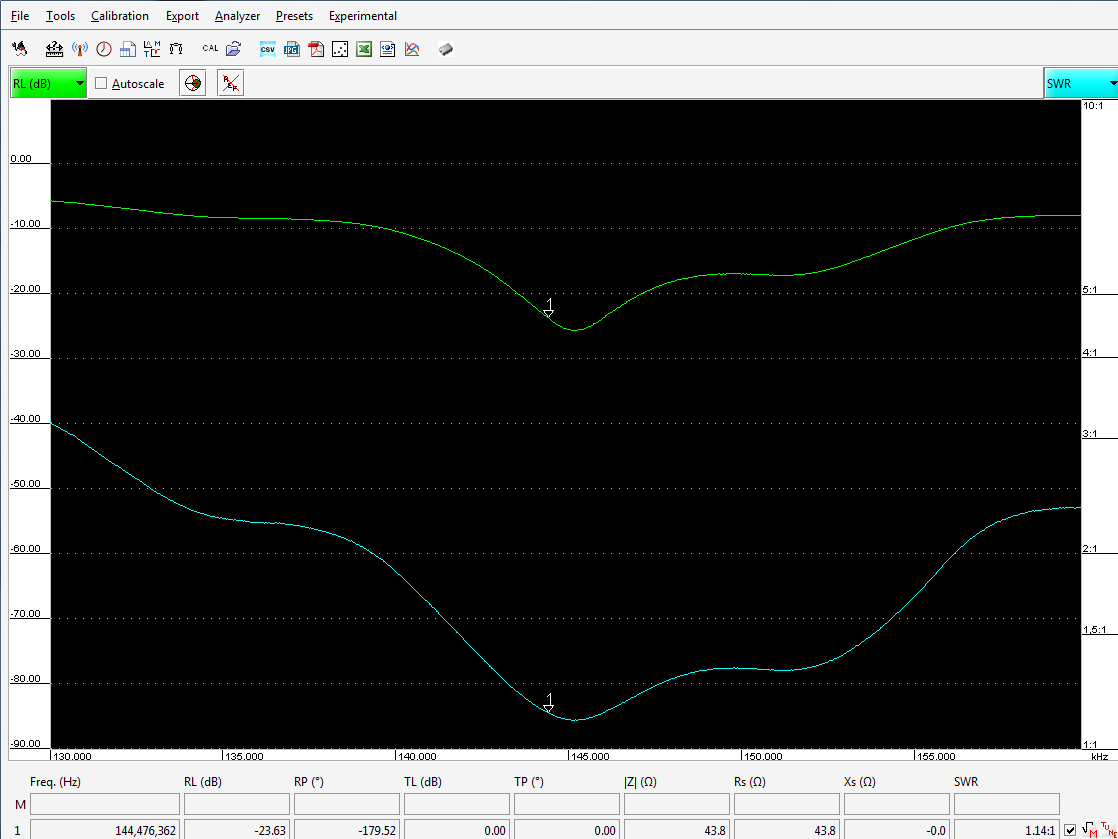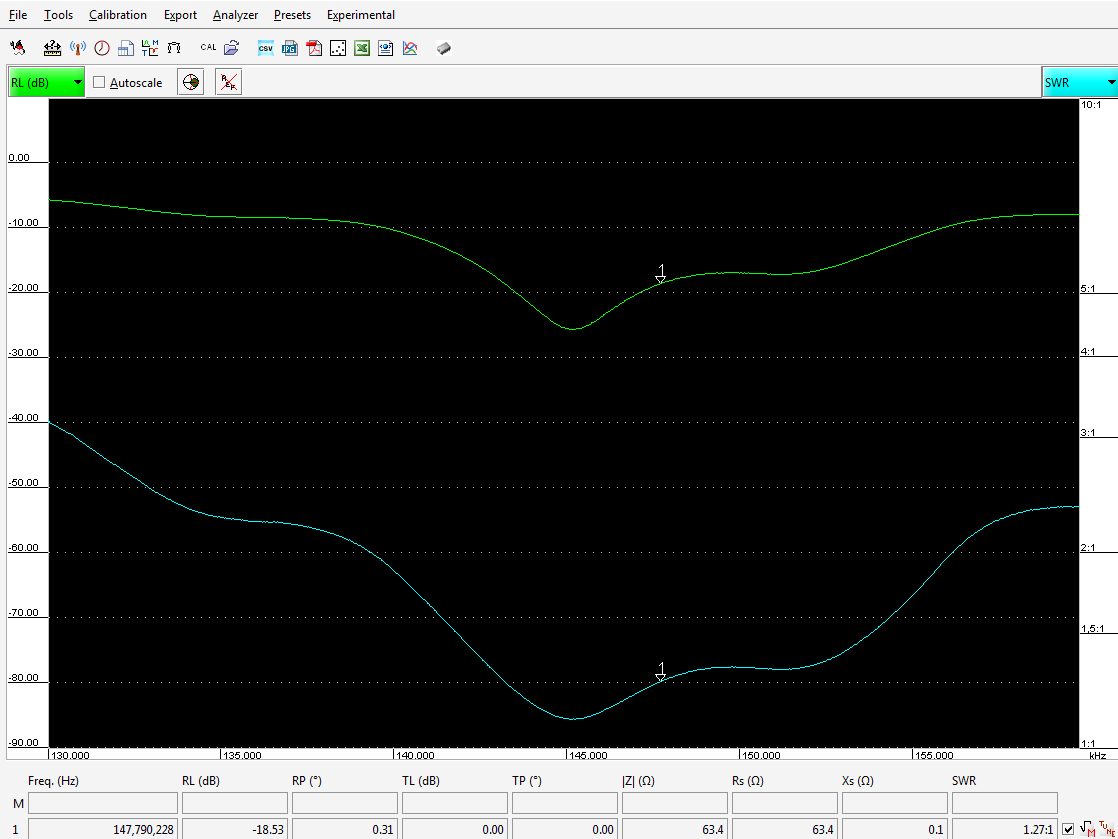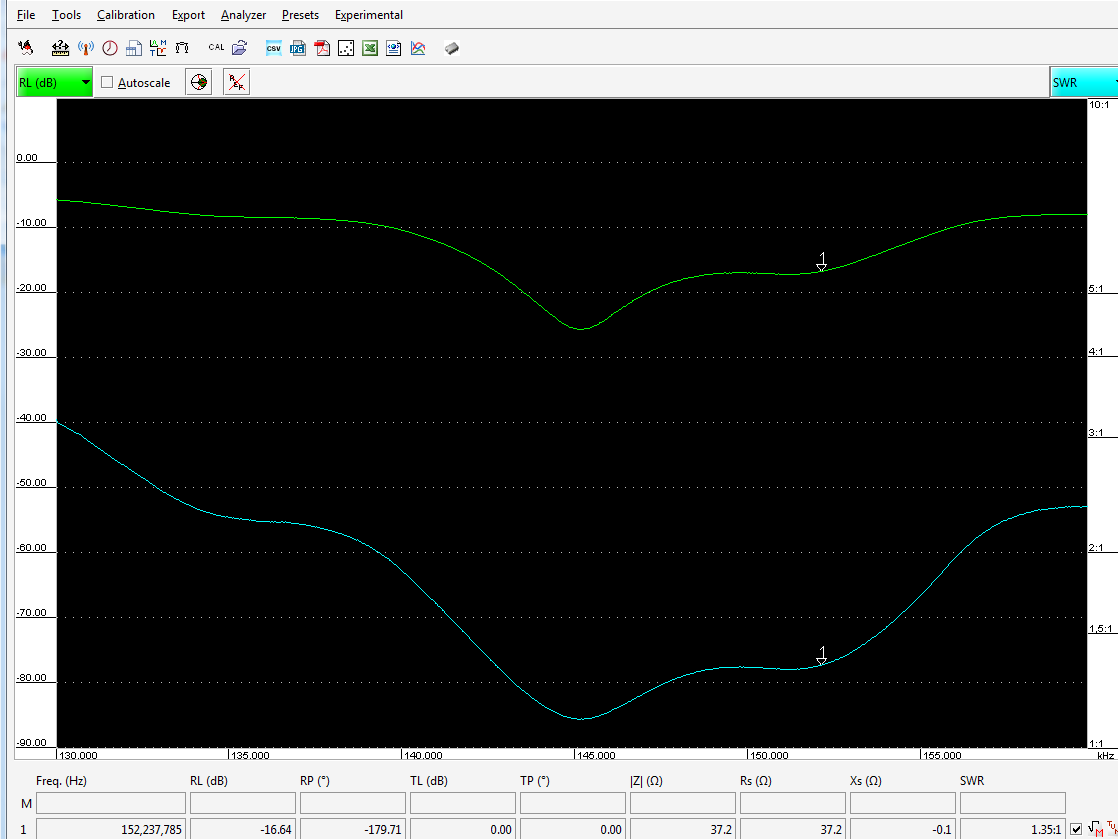YARA Homebrew Projects
YARA Members are avid home brewers. Below are a few projects: (click on small pictures)
But first a couple of links...
Tube radios...Glow plugs
AC6V's LINKS TO HOMEBREW AC6V
Youtube Homebrew Videos
VY1RT Ron - HF Spiral Antenna
Nov 2025Stealth Spiral Antenna: 80m-10m
Parts: TV Roof stand, Dollorama garden rods, baluns 9:1, 49:1, 64:1, Canadian Tire umbrella folding clothes line frame, wire
Picture and details
Theory and Discussion
A Compact Solution for 80m DXing
TAK antenna
Reviews For: TAK-tenna
VY1GP George
Sept 2025Portable Linked EFHW Vertical Antenna (click on small pictures)
Objectives: lightweight, mobile portable, backpackable, no radials, no tuner, 49:1, 54:1, 64:1 efficient transformer
Links/Bands/Harmonics: 17m, 20m (+ 10m), 30m (+ 15m 10m), 40m (+ 20m 15m 10m), 60m (+ 30m 15m 12m)
Configuration: 17m and 20m vertical on mast, 30m, 40m, and 60m sloping horizontal from top of mast
Materials: mast, wire 1, wire 2, carabiner clips (Coast Mountain), bullet connectors, ferrite core, transformer box - vitamin pill bottle
References: Portable Antennas, EFHW Calculator, efficicent transformer, linked EFHW
Comments: The dark wire is hard to see on the ground when changing links. Yellow or orange might be better.




VY1GP George
Aug 2025Portable ZS2BKW Antenna (click on small pictures)
This a portable lightweight version of a commercial antenna supported by a SOTABeam Compact light-weight 10 m (32 ft) "Travel mast".
Another home brew portable ZS2BKW
Weight of antenna and feedline: 1 lb 6 oz
Covers 20,17,12,10m with no tuner and all other bands with a travel manual tuner or LDG Z-100 Plus.
Testing: Sent a Winlink email via Soldatna, AK Winlink station under poor propagation on 40m, FT8 barely heard. Also made an FT8 QSO.
Lots of info and "how-to" on the Internet and YouTube






VY1GP George
Jan 2025Upgrade sBITX Transceiver (click on small pictures)
sBITX V2
I had read that the performance of a Raspberry Pi might be improved by using an M.2 SSD instead of the normal SD card. The M.2 SSD and adapter where not very expensive and it did not take long to install.
Tests: Start-up is more than twice as fast from the SSD than from the SD card in slot in Pi. There is no difference in booting the Pi from the SSD in a USB cartridge or installed internally. So far I have not noticed much difference in running the radio after boot up yet, but maybe I will notice later,
sBITX load times
- internal SD card - 1 min 2.07 sec
- M.2 SSD USB - 35.21 sec, 35.65 sec
- M.2 SSD Internal - 37.05 sec, 35.88 sec, 35.16 sec



VY1RT Ron
Dec 2024Selection of Field Box Ideas (click on image)

Download Booklet
VY1RSS Richard
June 202420m Dipole (click on small pictures)
- first project after getting licence


VY1GP George
July 2024Vertical Antenna and Linked Raised Counterpoise - does not need a tuner (click on small pictures)
SWR 1:1 to 1:3 on all bands 40m to 6m
Parts: 17' MFJ whip, speaker wire, aligator clips, and BuddiPole coil if desiring 40m, support: mag mount, drive-on mount, or hiking pole.
Inspired by (YouTube): Linked Elevated Radial System and
measurements below the video: Linked Ham Radio Basics: Best Ever Cheap Antenna! (construction starts at 9 minutes 49 seconds)




VY1RSS Richard
June 202420m Dipole (click on small pictures)
- first project after getting licence


VY1GS Gord
May 2024Transceiver Coax Switch (click on small pictures)


First, in switching pwr off to radios not connect to an antenna - I looked at using SCRs which seemed a nice clean way to go until I started costing out SCR the where current rate - max 30 max say. For a project I just started and wasn't she if it would go anywhere I decided to use 12 volt relay with contacts rated at 30 amps. Now that the whole project is done and working if I would build another I definitely look at SCR as the switches.
Second, I would place one of the coax corrector on the front of the box. For now just have a short piece of coax laying loose so I can connect a portable radio (or other) when I am doing radio servicing.
Third, the LED's that indicate which radio/antenna are very intense. Consider using softer LED's or increase value of the resistor in series with them to dim them. If you stare at them you will spots for a lengthy time.
Four, in building the box for the project - the coax switching circuit board dictates, in part, to the size of the box. I considered having the box - slope down to the front. The front of the box would be approximately 2 cm high and 13 cm wide. Again, the construction of the box was early in the project and was a guess at space required - better a little to big then too small.
Five, all the radios have a common negative connection to a power supply. The positive and negative voltage to the box is to facilitate power for the relays, both coax switching relays and relays that switches 12 Dc to the radios. The case is attached to negative 12 Dc as well as being grounded to my 'earth ground' for my shack.
If you are interested in getting a schematic diagram I can sketch one out and send it to you. gordsettle-at-yukonham.com
VY1GP George
May 2024HF Backpack, Elecraft K2 (click on small pictures)
- SBB, CW, digital (FT8, Winlink, others), QRP to 100wt.
- twenty year old K2, 9Ah LiPO4, 30' SOTABeams Travelmast, 24' vertical and counterpoise, 9:1 unun, AT100 ATU, small stool, Evolve3 laptop, Signalink, Palm key, earphones, school backpack.
- about 19 pounds, can be used on the ground from the backpack, or without backpack on a bench or table, or carried on an e-bike.
- K2 uses only 0.29A on standby/receive, about 1/3 to 1/5 of newer 100wt radios, so a smaller battery can be used.






VY1FC Malcolm
June 2023Random Wire Endfed (click on small pictures)
- covers 40m, 30m, and 20m (maybe higher bands too with tuner)
- 18 gauge speaker wire, 41' radiator, 31' counterpoise
- 9:1 unun
- 7m fishing pole
- used for POTA activations at Conrad and SS Klondike
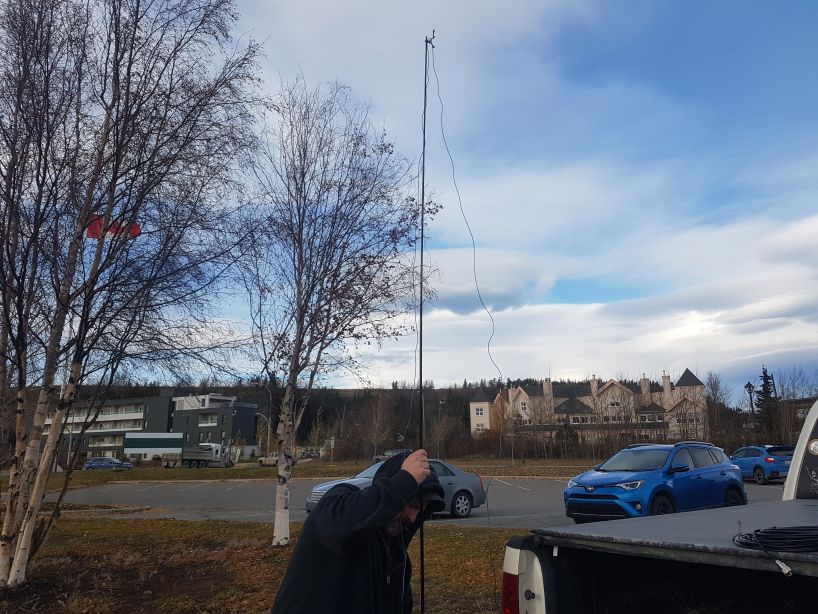
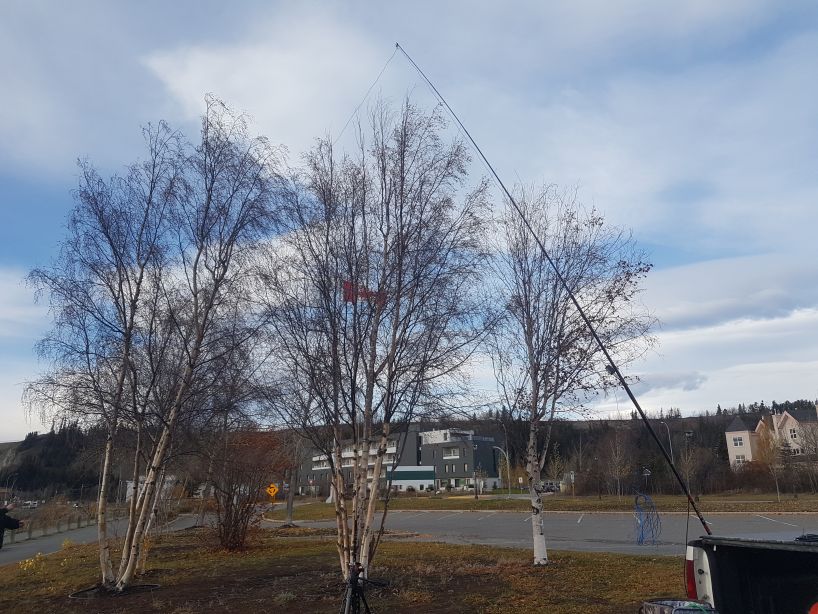
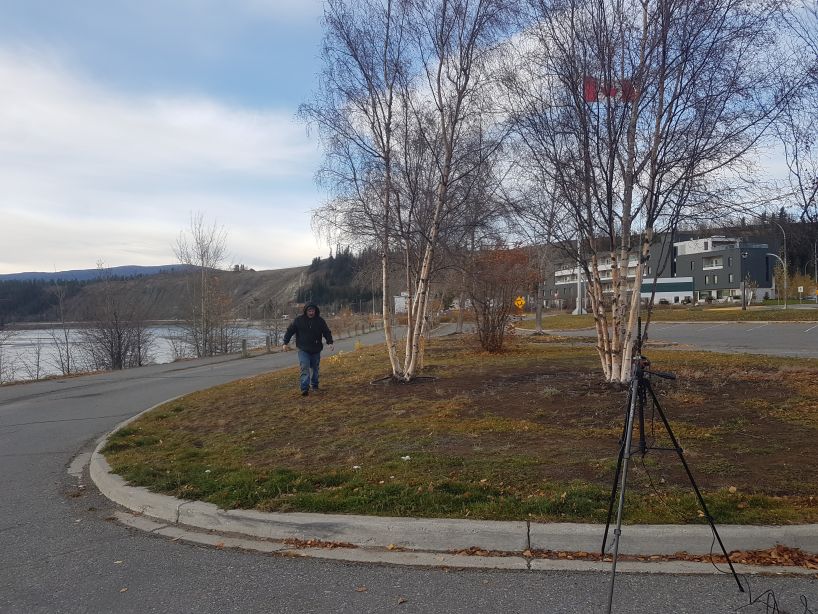
VY1GP George
Aug 2023Portable Aluminum Mast (click on small pictures)
The inspiration came from SOTABeams travel mast which I have been using for several years. It was up all winter supporting a 40-20 trap dipole. But it is too flexible at the top to support a heavier dipole.
The scrap metal pile in my yard yielded 4 aircraft aluminum tubes ranging in length from 5' to 7' and they could all slide into each other. The connections were simply a 8" section sliding into the next larger tube lower down and held with a hose clamp to make a mast of about 24'. At the top is a 18" piece of aluminum offset and a pulley to lower and raise various antennnas. The current antenna is a 40-10 doublet. It takes less than 5 minutes to assemble and erect.The sections come apart easily and store inside each other and are easily transported inside my Taurus.
The mast seems sturdy enough with guys to support a lightweight hexbeam like the BuddiPole portable hexbeam - 6 band (20m - 6m), 9.50 lbs (4.3 kg). YouTube I have already started accumlating parts from Canadian Tire and Home Hardware.
This mast virtually cost me nothing, but I found that aluminum tubes can be purchased at Duncan's Sheet Metal in 20' lengths.
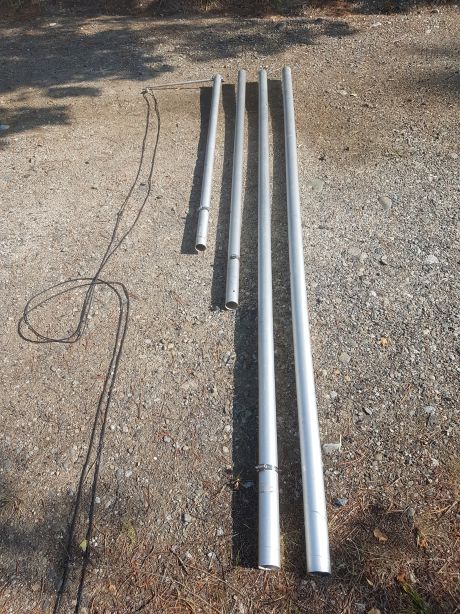
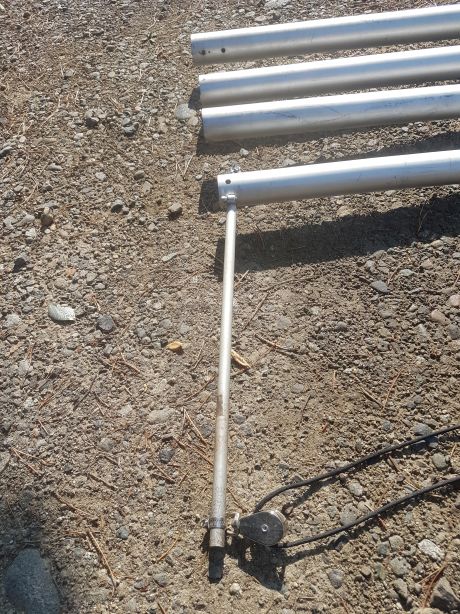
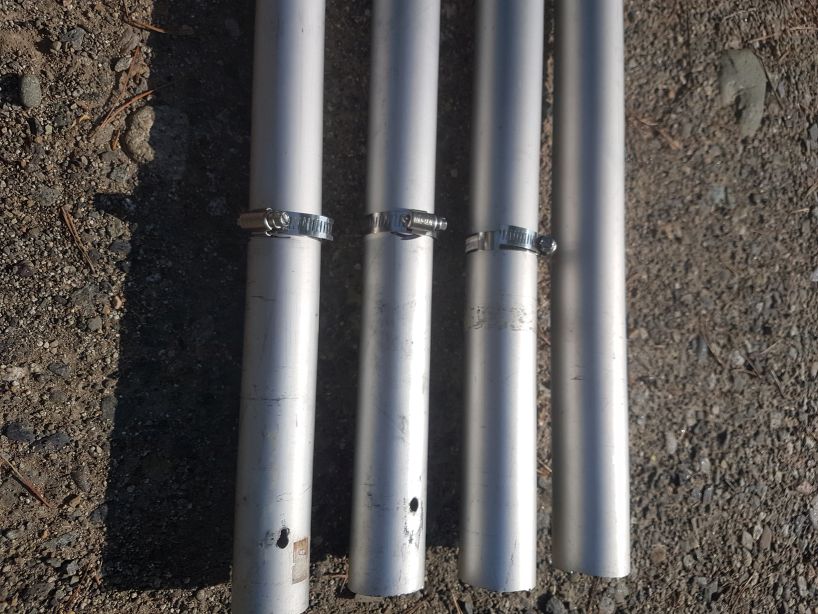
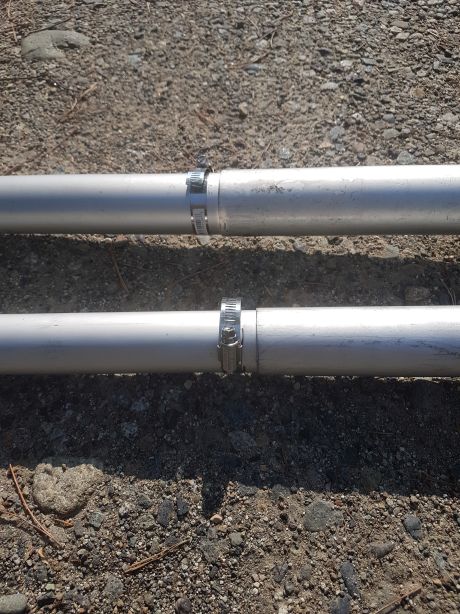
VY1GP George
Aug 2023Drive-on Mast support (click on small pictures)
I built a drive-on mast support a few years ago with a 24" 1" diameter steel water pipe, a flange, and scrap plywood. It worked well for the SOTABeams fibreglass Travel Mast, but I wanted something sturdier for a heavier portable aluminum mast. Home Hardware supplied all the parts for less than $40: metal leg base for a scaffold, a 18" 3/4" diameter pipe, and two PVC pipe connectors.
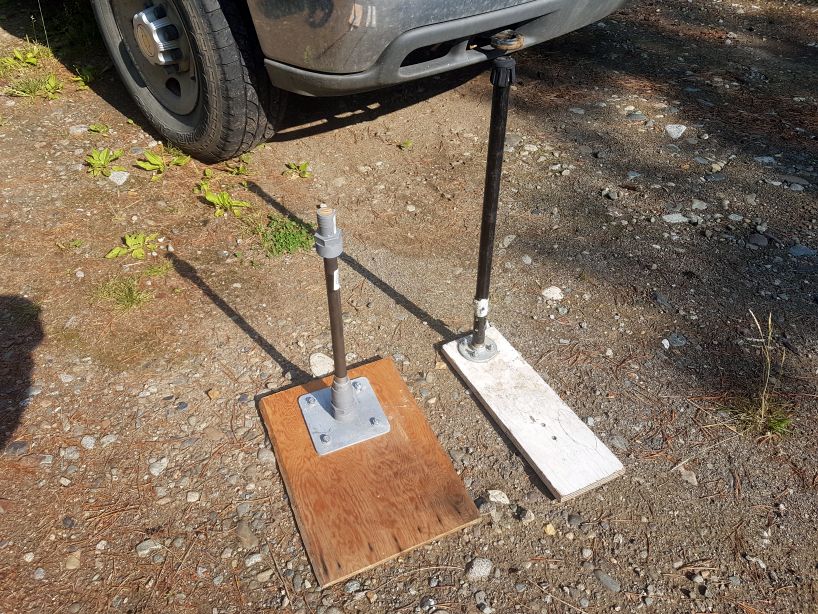
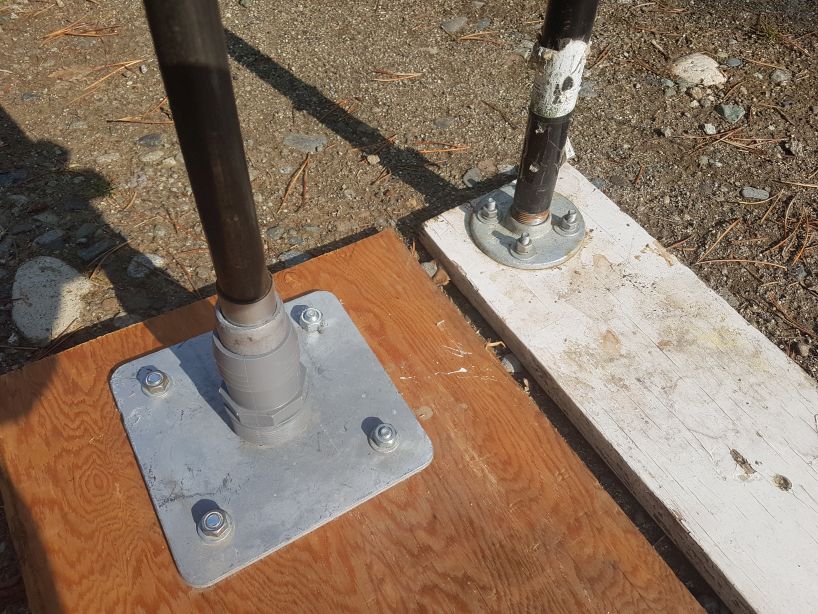
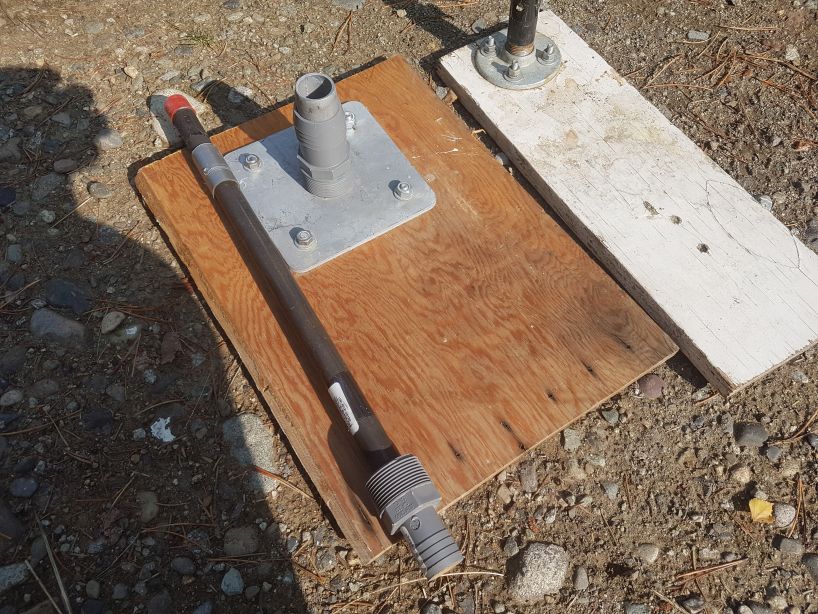
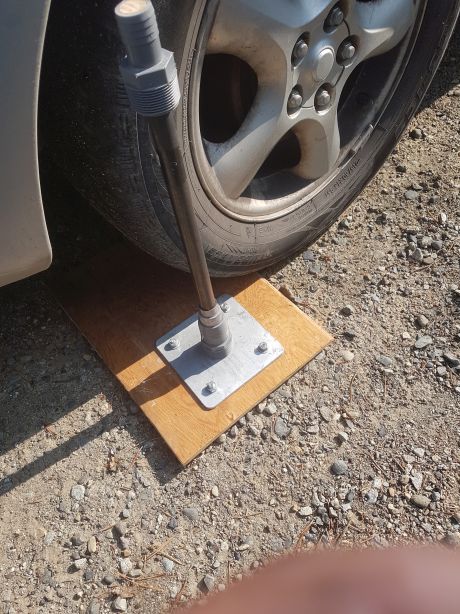
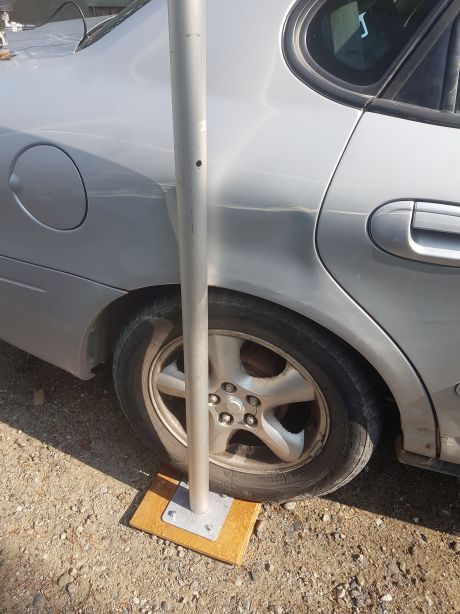
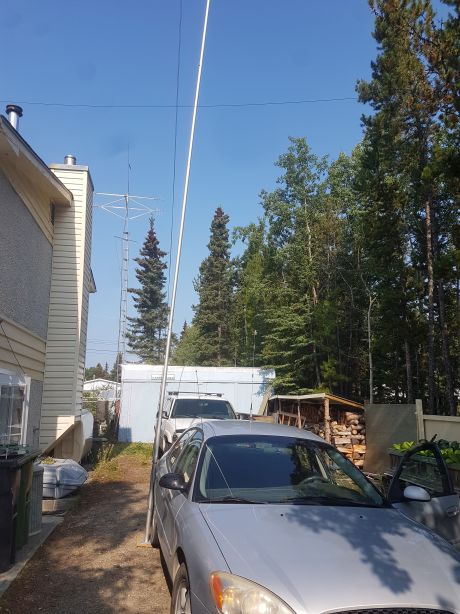
VY1GP George
Aug 202340-10 doublet (click on small pictures)
A couple of weeks ago, VY1CO Scott, suggested that I might want to try a 40-10 doublet (44') fed with parallel window line. Ten years ago I had a 66' doublet and a manual tuner. It worked "ok" but was fiddly so it went into storage. A quick modification, hoisted on a new portable mast, and matched with a autotuner convinced me that it is a great antenna multi-band 80-6m for a small lot and for portable operations. One of the benefits is that it is much quieter than my other antennas and I can now hear the weaker stations. This might because of its location at the front of the lot far away from the power lines at the back and the neighbour's noisy RFI devices. Data from testing (80-6m) with and without an autotuner with various transformers 4:1, 2:1. 1:1.
There are lots of websites and Youtube Videos describing how to build a 40-10 doublet. Here is one by the famous L.B. Cebik (SK). Suppose I Could Have Only One Wire? Check the gains on the higher bands in his Fig. 3 and Fig. 4 and explanations.
I might try to build a backpack version based on a SOTABeams portable doublet and use it with the portable fibreglass mast.
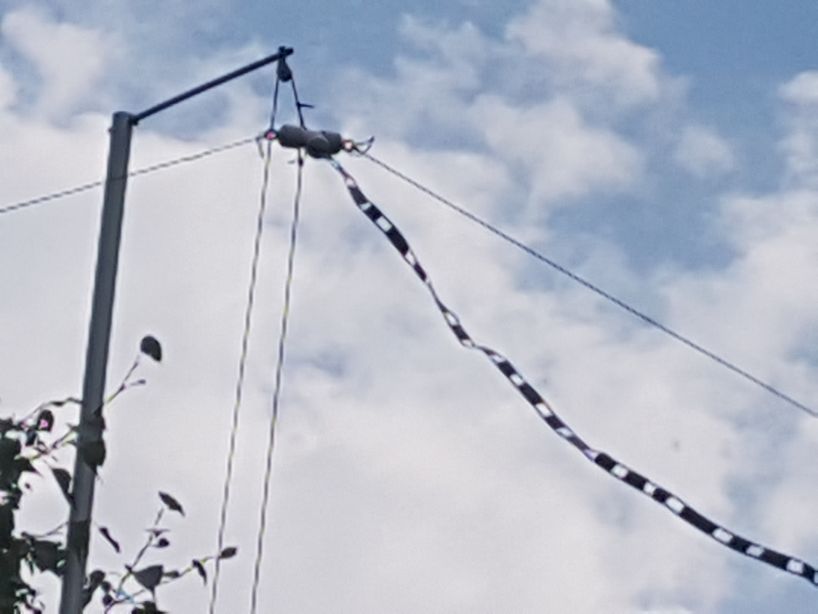
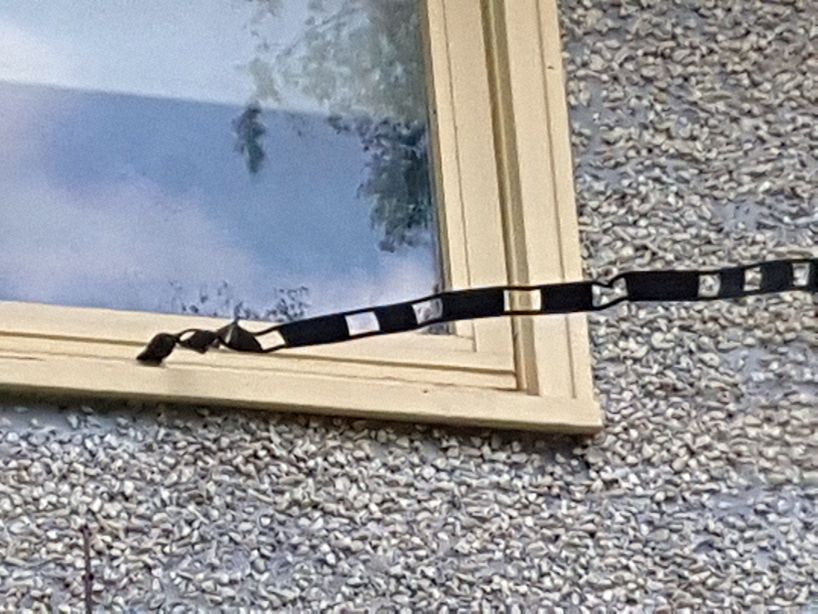
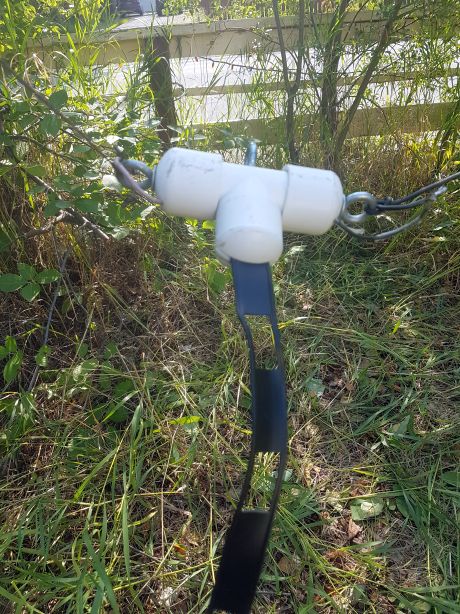
Screen shots: EFHW, vertical, mini-beam vs the quieter doublet in lower part of the waterfall
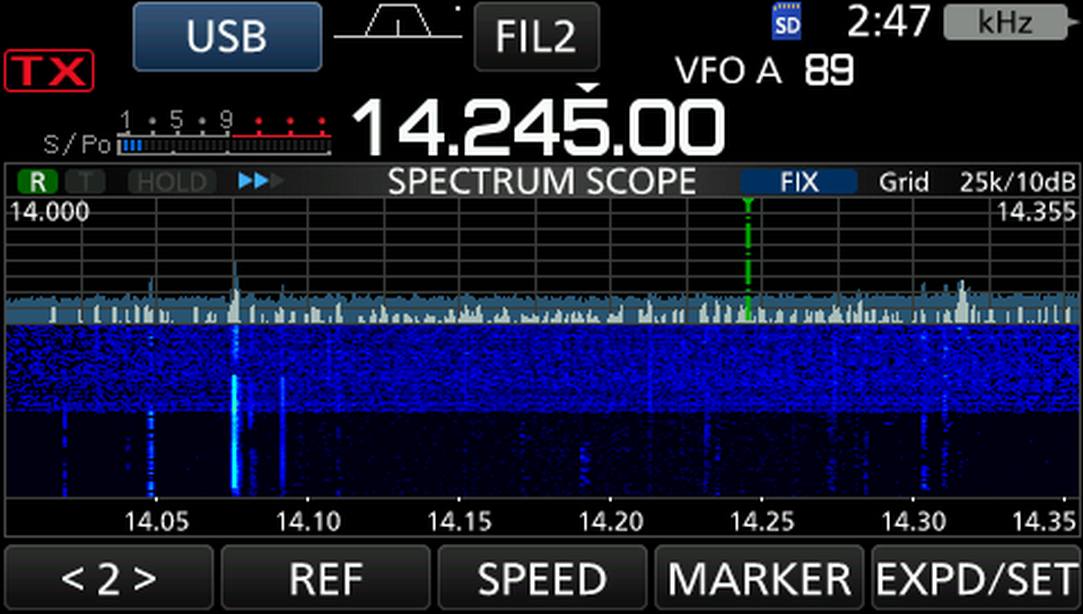
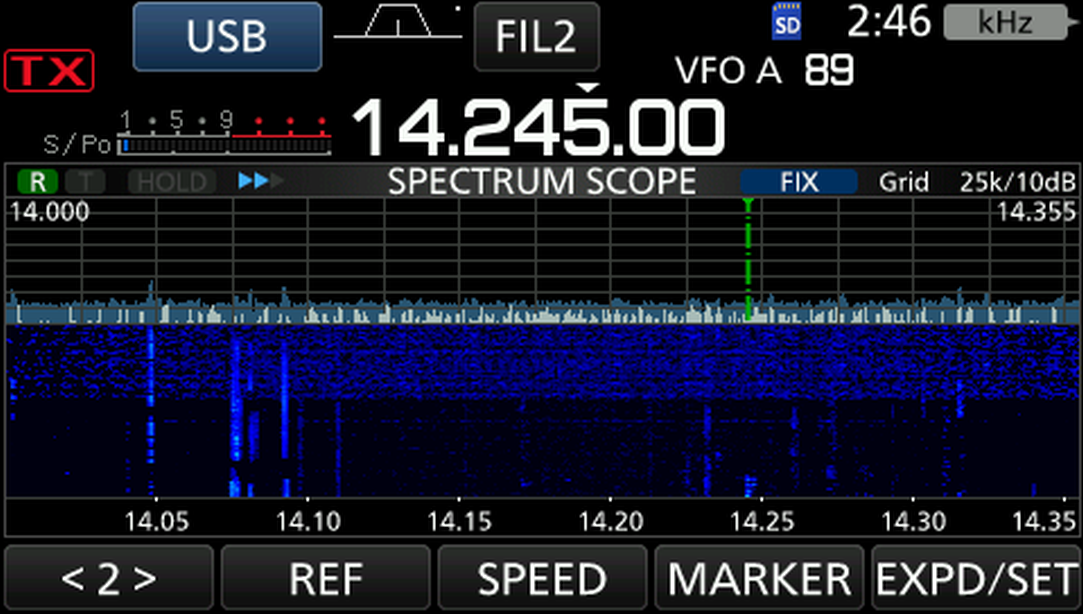
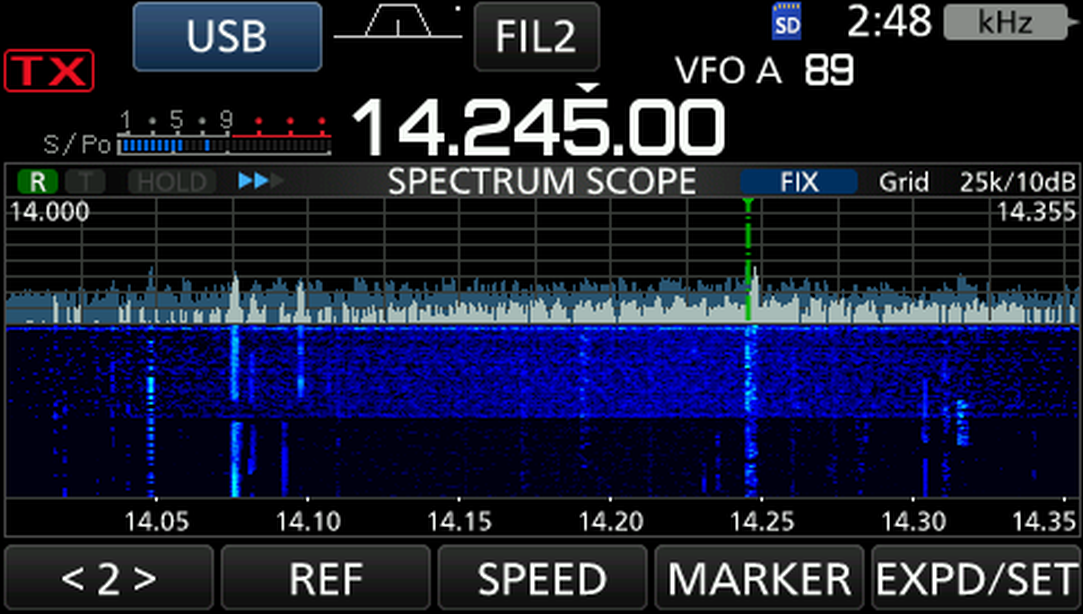
VY1GS Gord
Nov 2022Icom 706 Mic/data Switch (click on small pictures)
Full pdf document - 6 pages, 10 pictures, schematic
Found an old construction box (5 ½ x 3 x 2) I had and resourced it for this project. Used 2 male to chassis-mount female Cat 6 connectors (cut off the male end) as the microphone and Winlink plugins. The color coding for the Cat cable ending on the Icom microphone does not conform to standard color coding of Cat cable so make sure the pins follow 1- through -8.
I purchased four 12 VDC relays and soldered diodes across the coil to suppress the negative excursion of DC when deactivated and disc capacitors to suppress any induction. As far as supplying power I decided just to use a stereo speaker wire block --- any bared wire will fit from whatever you want – cigarette lighter for mobile use, the 12 volts used to power the radio, a small battery pack.
It defaults to the microphone plug when de-energized (or just no power to operate) by virtue of the pins you assign on the relays.
- Gord
VY1BG Geoff
Aug 2022Updated Solar Panel (click on small pictures)
VY1BG updated the control mechanism to track the sun. A battery screwdriver with 3 AA batteries moves the solar panel, the controller powered with AA batteries activates and controls direction of panel movement. It is very sensitive and really noticeable on the wattmeter when the solar panel is not pointing at the sun directly.
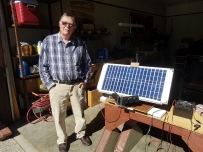
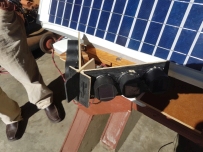
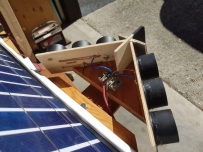
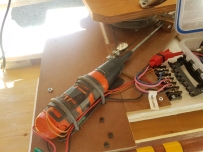
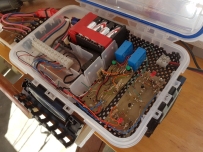

VE3XCC Charlie (VY1CC)
Aug 20222M YAGI-UDA For Fringe Area Communications (click on small pictures)
Full document in pdf
The Problem: Access the repeater that is 45 KM away. Bearing is 120 degrees. Some signal can be heard, but extremely noisily, and even 50 Watts into a quarter wave mobile antenna will not bring up the repeater.
Further Analysis: As you can see from this Google Earth elevation profile I do not have a clear path. However with diffraction effects, I should be able to communicate. Diffraction will, however, create significant additional path loss, especially ontransmit.
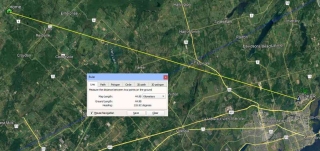
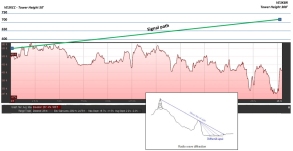
Time to try a Yagi: A bit of number crunching, and I thought I’d start with a 6-element design. EZNEC suggests 11.5 dBi improvement (see below); design includes 1 Reflector, 4 directors, 1 driven element. I found some 13 mm flat stock aluminum 3.5 mm thick in 8 foot lengths and some 8 foot channel stock for the boom as well on price reduction at Princess Auto (total cost $16). I used VK5DJ’s Yagi calculator for everything but the driven element matching
The matching problem: Measuring with the NanoVNA showed feed point impedance of about 22 ohms resistive. This suggests the resonant length is right, but we will need to raise the impedance to 50 ohms. My first thought was a transformer. Turns ratio would be 7:5 and would also take us from unbalanced to balanced. Unfortunately my junk box did not have a suitable toroid. This might be a future modification, especially if I measure a lot of RF coming back along the coax. Next thought was a beta match. This U shaped wire about 5 inches long typically corrects the impedance of Yagi antennae, however my measurement showed this made things slightly worse at the frequency of interest. I then twisted it into a single turn coil and re-measured – impedance was lower again Clearly I need a capacitive element, so I cut the wire in half and pushed the two pieces close together in parallel. This improved thing but not quite enough. I then bent them over parallel to the radiating element – still more improvement Finally I moved them as close as made sense and the match was excellent.
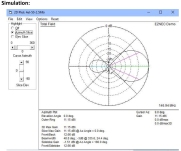
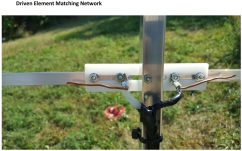
The Result: I was able to bring up the repeater with a Baofeng UV5R (approximately 5watts). I logged into the repeater with Echolink, and was able to send andreceive both directions. This brings talking to yourself to a whole new level!
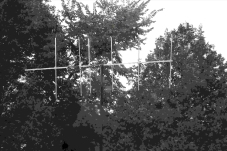
VY1BG Geoff
Aug 2022Updated Solar Panel (click on small pictures)
VY1BG updated the control mechanism to track the sun. A battery screwdriver with 3 AA batteries moves the solar panel, the controller powered with AA batteries activates and controls direction of panel movement. It is very sensitive and really noticeable on the wattmeter when the solar panel is not pointing at the sun directly.






VY1KX Allen
July 202240-20 Trapped Dipole (click on small pictures)
A multi-band antenna can be built using traps (combination of coil and capacitor) which stop RF frequencies on a frequency the trap was designed for and allow lower RF frequencies to continue along the antenna. Reference & Reference 2 The VY1KX QRP dipole antenna works on 40m and 20m without a tuner, constructed using small diamater stealth wire and pico trap kits (10 Watt rated) and a balun kit from SOTABeams. It works well in campgrounds with a lightweight portable mast from SOTABeams.
"The Sotabeams balun doesn’t have a place at the top for a hook so I added the white plastic piece and the stiff green wire so as to have a convenient way to attach the antenna to my “Tactical pole”. In use, the stiff green wire is just inserted into the top section of the pole." More to come ...
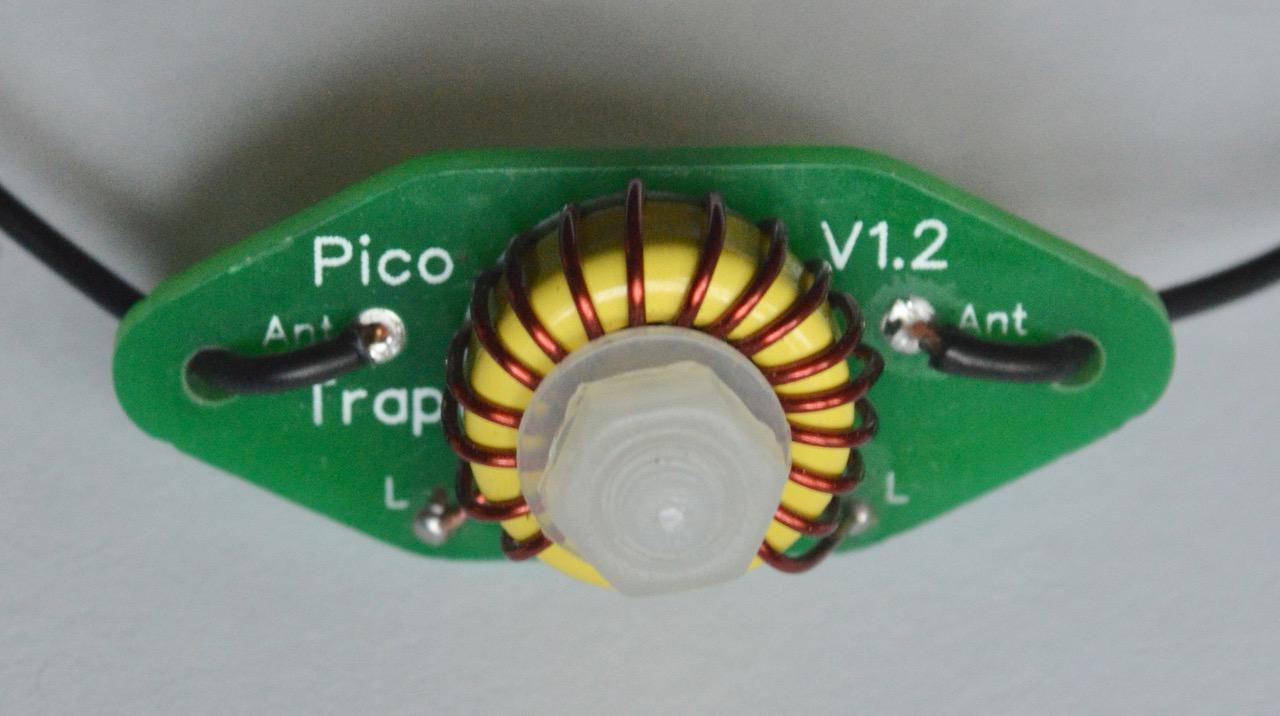
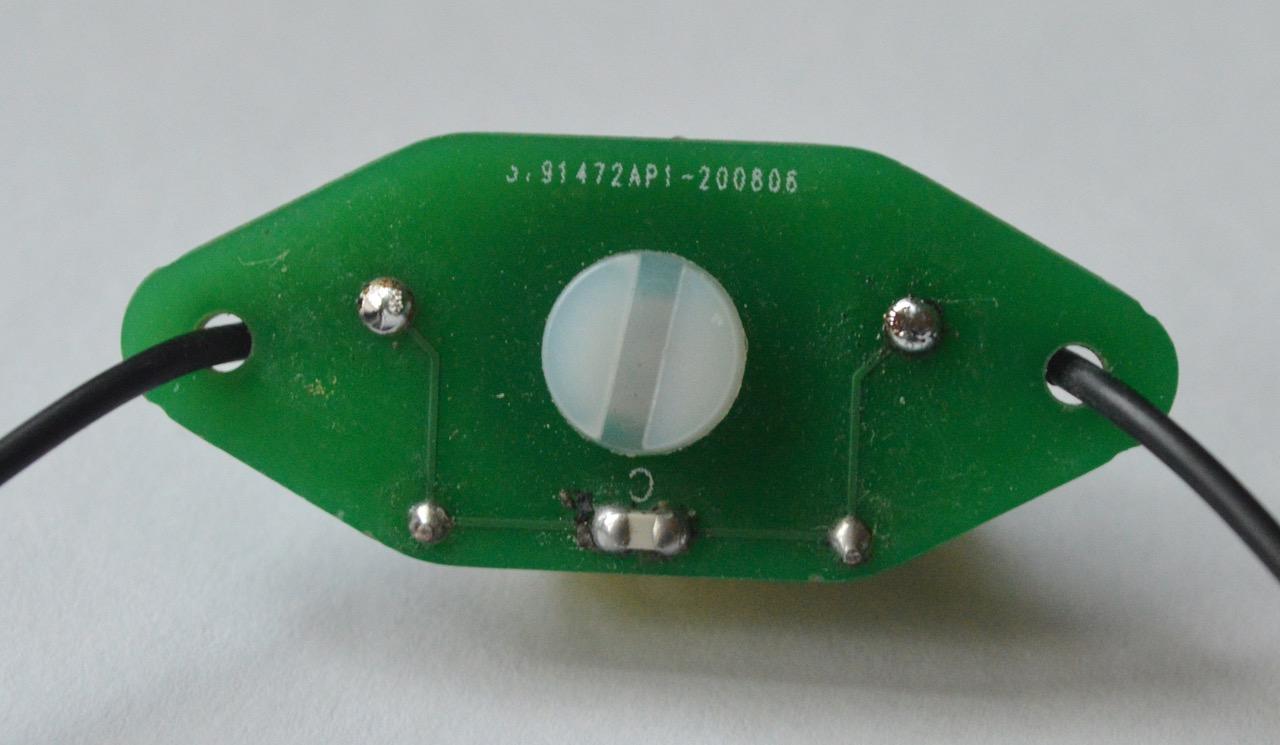
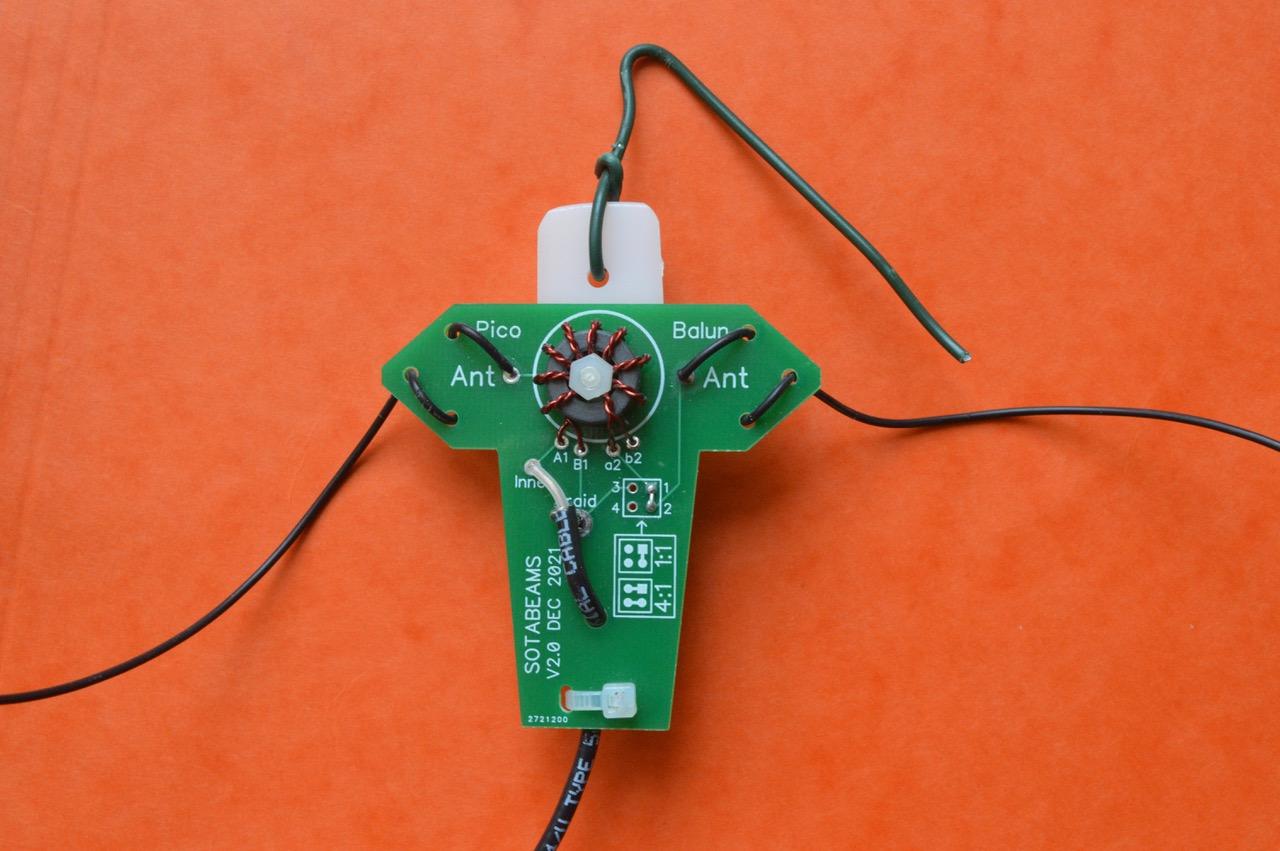
VY1GP George
July 2022Portable "Station in a Box" (click on small pictures)
Update Aug 13, 2022: exchanged large paddle for a small one, exchanged large ATU for a smaller one, added a solar charge controller, inserted Surface Pro table to run Ham Radio Deluxe, WSJTX and Winlink. Made some FT8 QSOs and a Winlink email exchange via a gateway in San Rafael, CA on 20m.
This inspiration came from testing a portable station on Field Day 2022. Everything fit in a small Canadian Tire Maximum tool box that I had on hand: FT891, 9Ah LiPO4 battery, LDG-Z100Plus Autotuner, watt meter, heavy Belcher paddle, power cables, coax jumper, manuals and notepad. It worked well, except that it took a while to assemble the station and put it away, and was difficult for a new user to get everything packed up in the right spot. Things were left over.
When I realized that the lid can be removed completely by slidng out the rods in the hinges, it provided opportunity for reconfiguring everything. Now very little needs to be removed from the box (just the tuner and the paddles) and only a couple of connections are required to be on the air quickly. A bit of velcro and flexible foam material hold everything in place when packed away and while operating.
The box stands vertically while operating so the radio screen and controls face the operator at a nice eye level. The speaker is unobstructed and faces the operator. A spare battery can easily be exhanged or a power supply connected by changing one Anderson connector. The bits of packing foam can be stored neatly in the paddle's spot while operating. All the radio jacks are readily accessible for connecting a paddle, key, and digital equipment. It is portable, weighs 17 lbs, looks nice on a small desk or a picnic table, and sits nicely on the centre console of my Taurus.
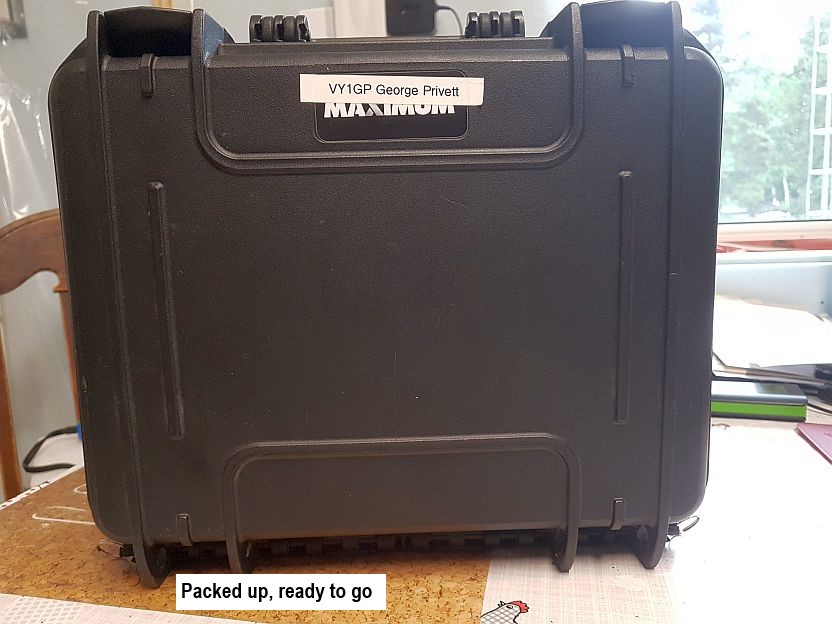
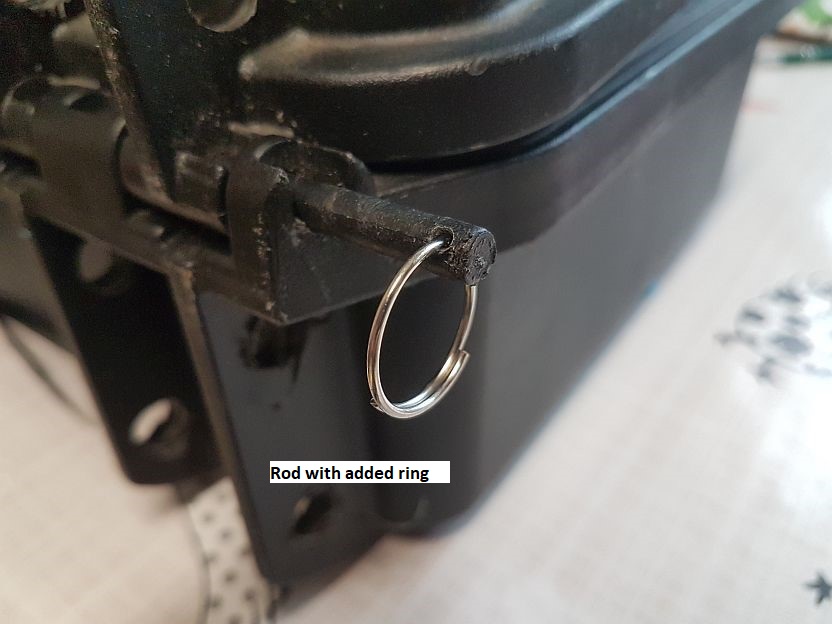
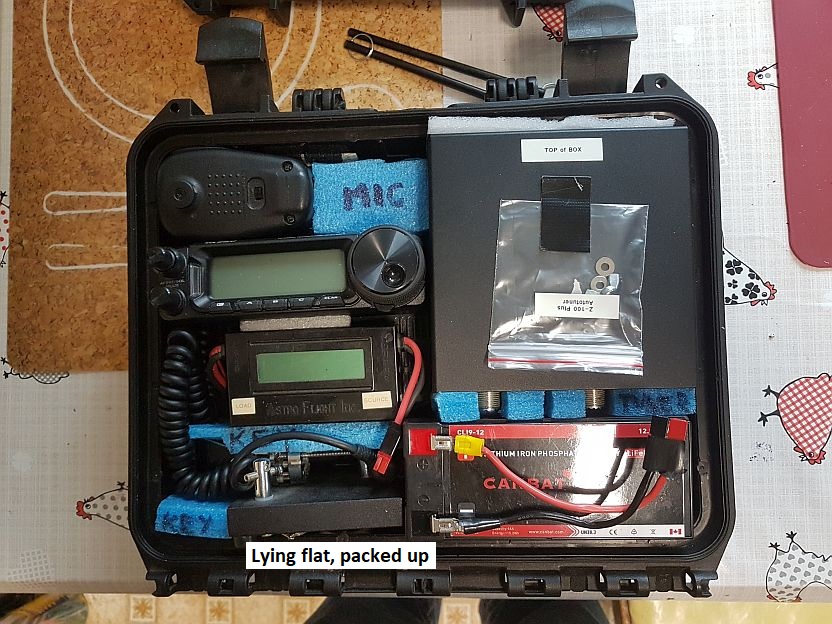
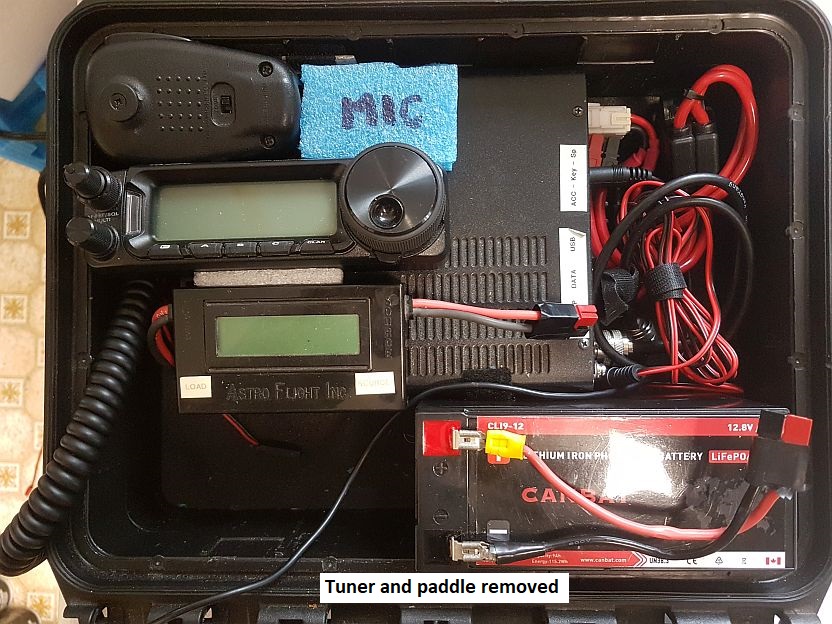
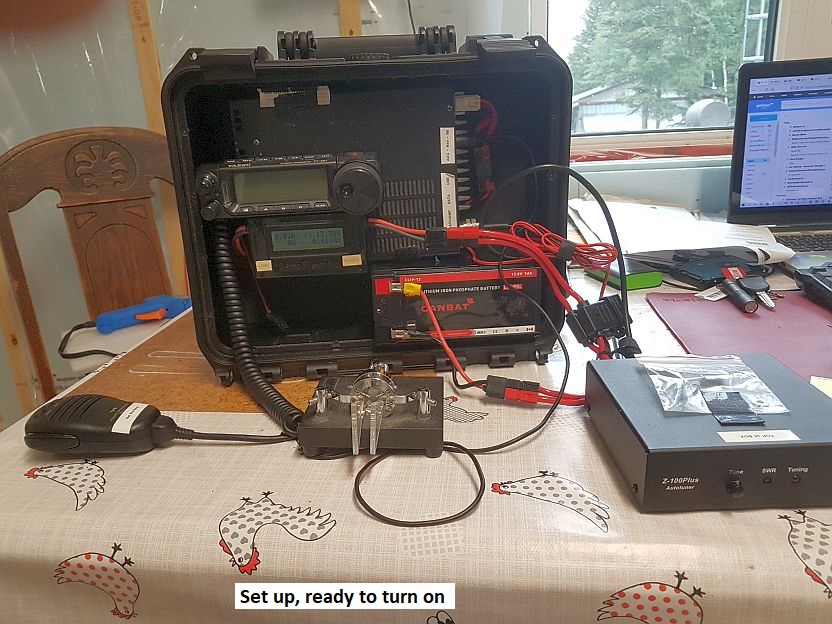
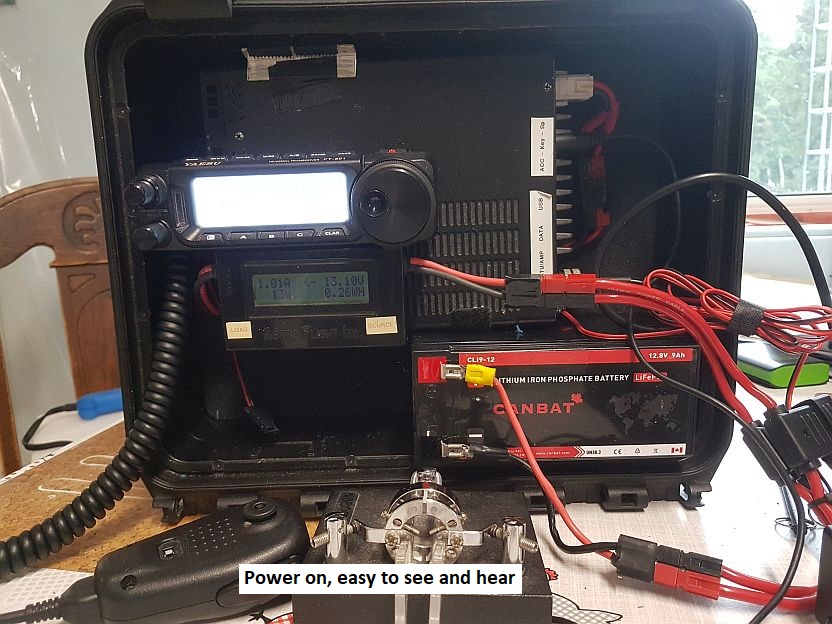
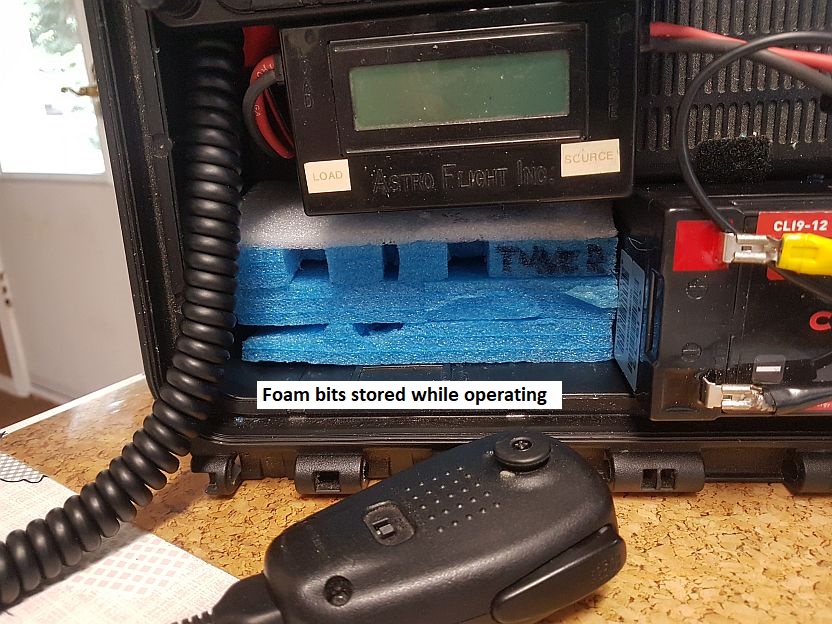
VY1GP George
June 2022Portable Linked Dipole Antenna: 80-60-40-20-17m
A 100 wt linked dipole antenna was built as a demo for YARA Field day, but was not set up. Materials: bits of 18 ga speaker wire, auto wire bullet connectors. Tested with SOTABeams portable mast, on a tower with pulley, and on 14' 2x3 with pulley with 4:1, 2:1, and no baluns. Fed with coax. Easy to use, very quiet antenna as set up in my front yard. For portable 40-20-17m you can disconnct the longer pieces of wire and leave them at home.Theory On-line Calculator Pictures can be seen in the photo albums.
Update August 19, 2002: A small pulley was added to a 10m Sotabeams Travel Mast to quickly raise and lower the linked dipole to change bands or switch from DX to NVIS. Components: from Canadian Tire - 3/4" pulley, 50' paracord, hose clamps on each mast join to prevent the mast from collapsing on itself, a lightweight Sotabeams 1:1 balanun kit. The pulley was fastened about 3 lengths from the top ( about 25' high).
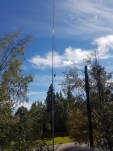
VY1GP George
January 2021Anderson Connector Inline Switch (click on small pictures)After a couple of months searching the Internet for an Anderson inline connector for a moblie/portable unit and finding none, I built two from Canadian Tire parts. The 1st attempt resulted in solder melting the automotive switch inside, the 2nd is a lamp cord switch, and the 3rd is an automotive switch with slide-on connectors. The automotive switch has a red light when "on". Caution: if you try this make, be sure to connect power and radio on correct pins or it will short. The switches were tested with 100 watts power into a dummy load. The exposed wire/connectors were insulated after the picture was taken to show the connections. Jan 15, 2021
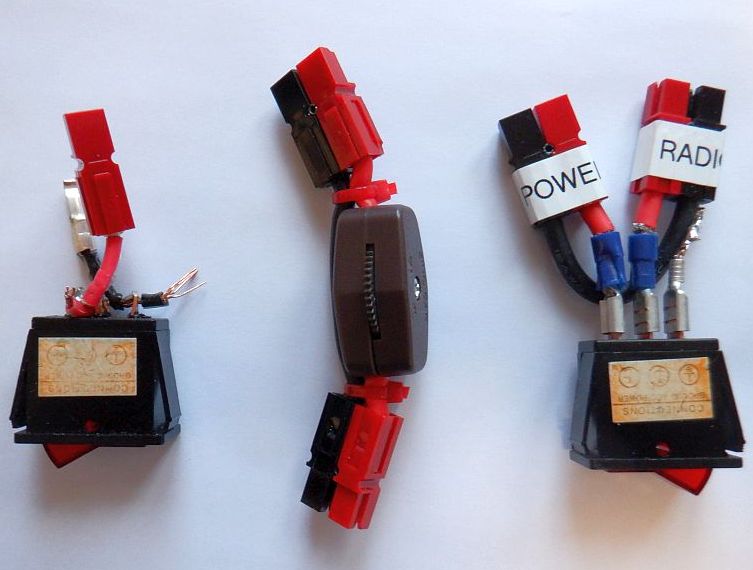
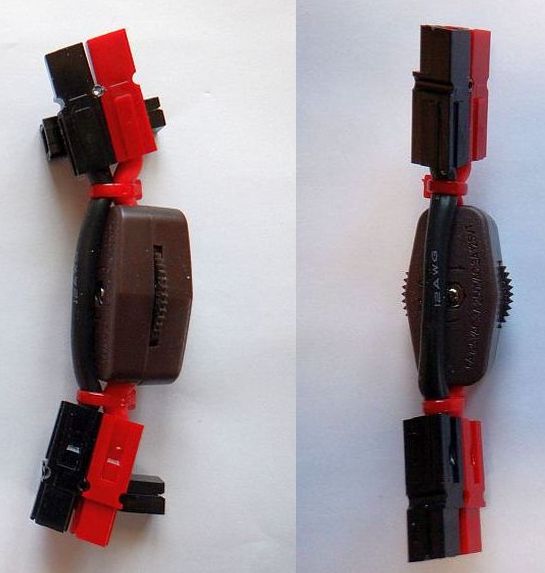
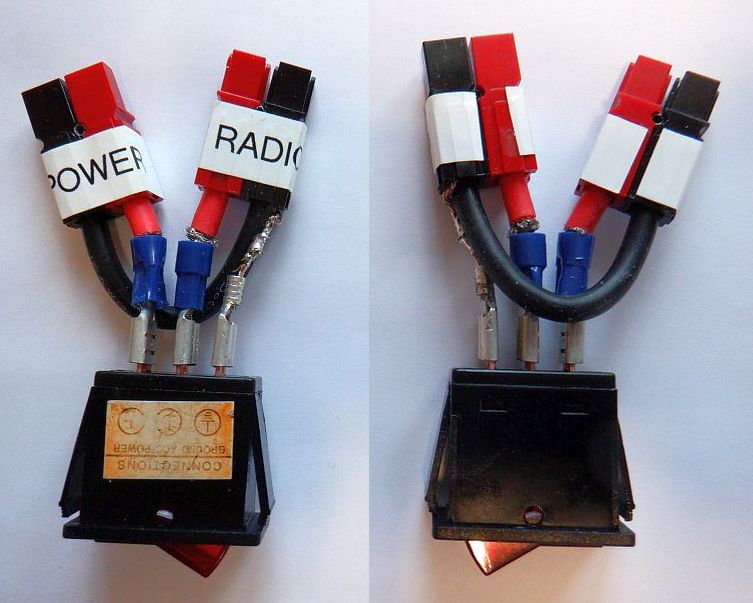
VY1RF RAY: DSTAR Pi Zero Hotspot kit
Dec 15, 2019VY1FC Malcolm: QRP Rig, Slinky Antenna
Fall 2019VY1MT Michael, Straight Key
March 2018VY1GP George, Straight Key
February 2018 - The key is make from an aluminum can tab, and fastened to a Pixie 2. Made for the YARA Pixie 2 kit-building workshop.VY1BG Geoff, 4 way coax switch
Nov 2017 - The switch was salvaged from a Fisher linear amp 1960 -- 1970 eraVY1MK Mark, 2m and 70 cm
Oct 2016 - 2 X dual band and 3 VHF jpoles up. Single coax and loads up almost perfect on both 144/440VY1GP George, Flag Pole Antenna
Oct 2016 - References: Youtube - Flag Pole Antenna Project, Force 12 flag pole antenna - check the RF charts and video.Constructed of 2 10-foot alumiumn downspout, 1 piece of plastic downspout (Home Harware) and a few bits of coax, wire and screws. SGC tuner is at the base of the antenna for 80-10m.
VY1MK Mark, NPOTA
Sept 2016 Mark built a new multi-band antenna for activation of National Parks on the Air (NOTA) at the Summit on the US/Can border. His antenna design comprised a home-brew buddipole and two wire dipoles.VY1YU Yuuri, 2m J-pole
Homebrew 2m J-pole [buddi-pole components] (click on small pictures)Tried to build a bottom-fed J-type antenna for 2m, using various buddipole elements, but the shortest elements are just a bit to long to get it to be resonant on the 2m band. So I designed my own pseudo-J antenna with a parasitic element that helps shift the feedpoint impedance to where I want it (near 50 Ohm resistive).
Three pictures show the mechanical structure and three show the results of a sweep: you can see that the SWR is pretty low across the whole of the 2m band. The three sweep images differ only in where I marked apparent antenna resonances (two of which fall inside the band).
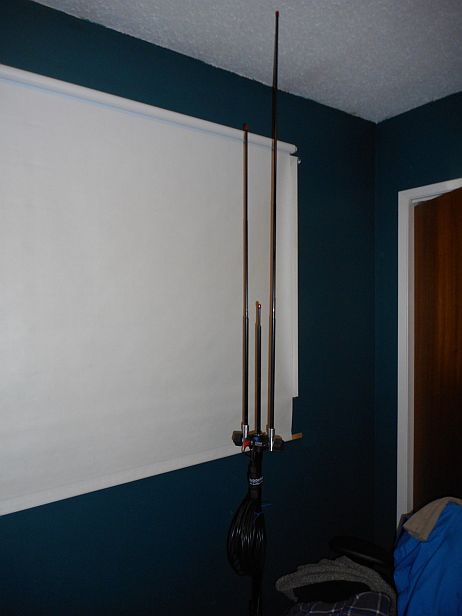
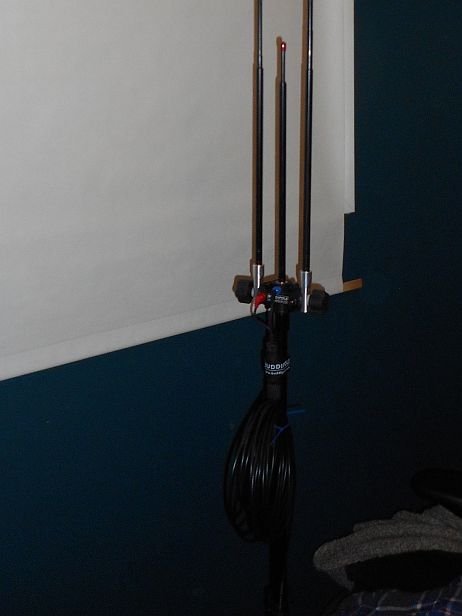
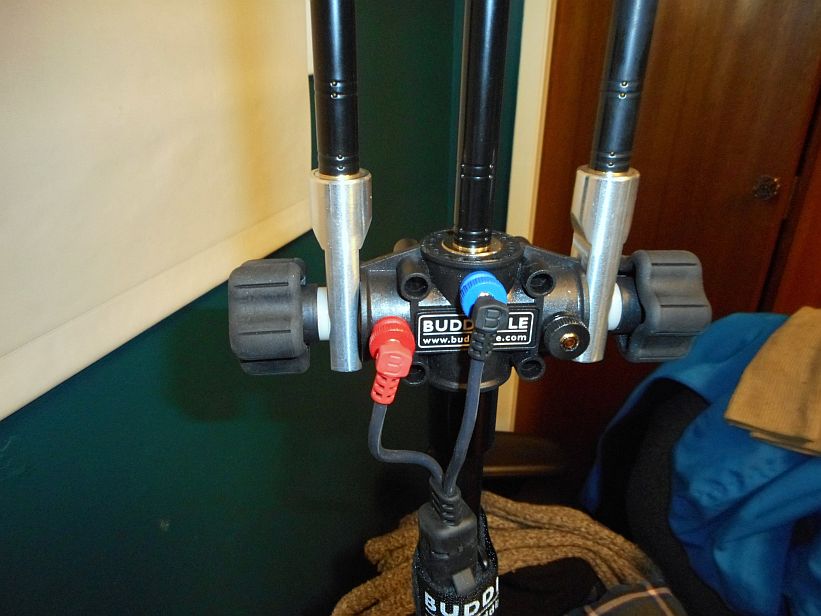
VY1BG Geoff
Homebrew Solar Tracker (click on small pictures)VY1MK Mark
Homebrew tuner (click on small pictures)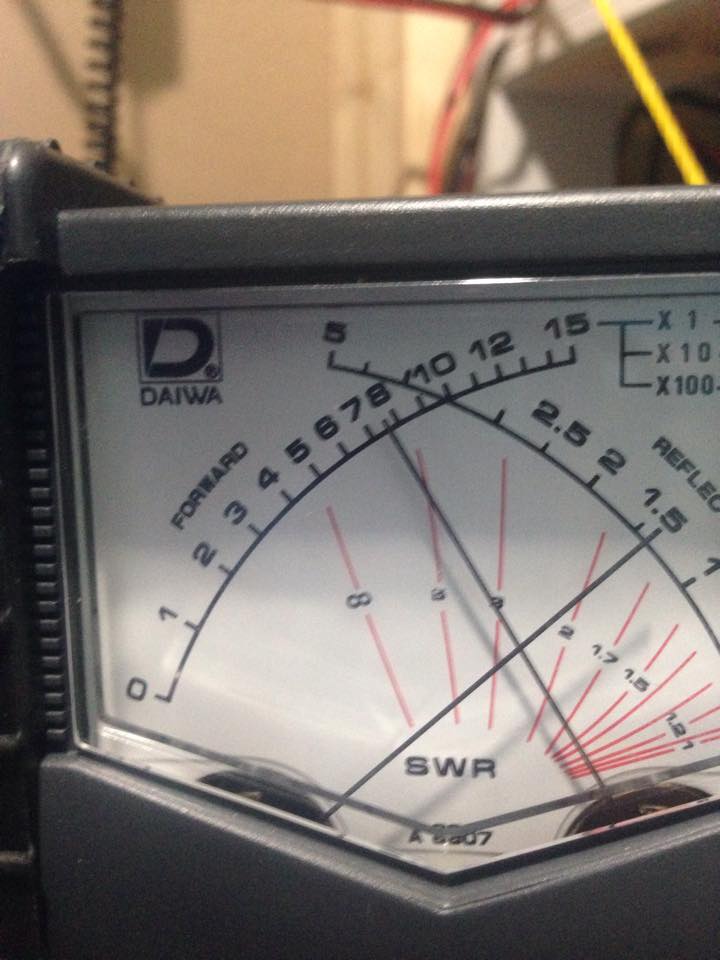
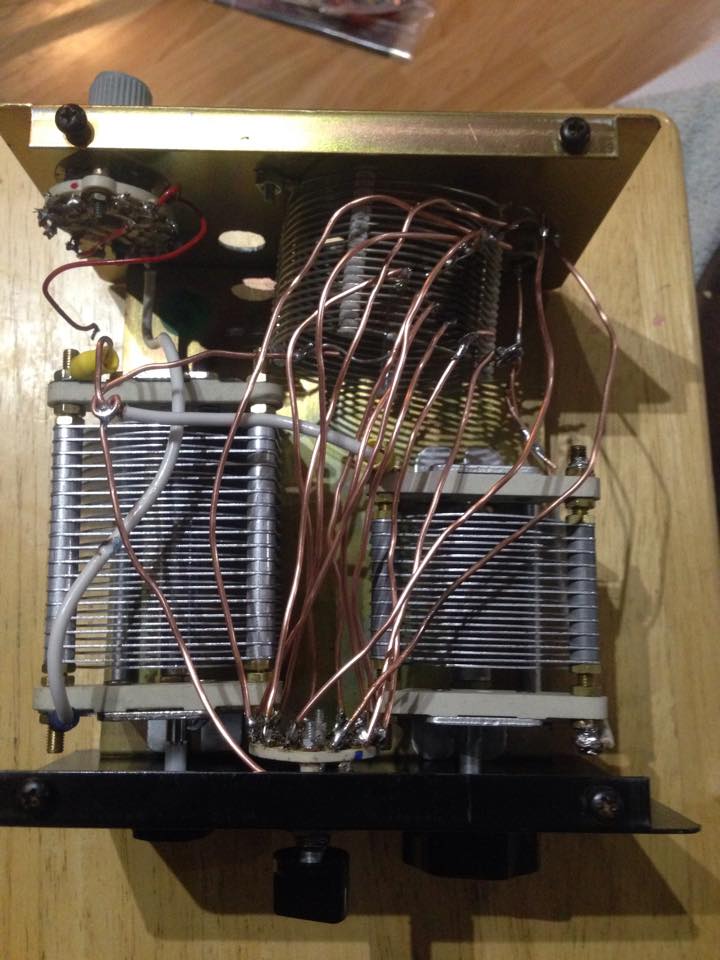
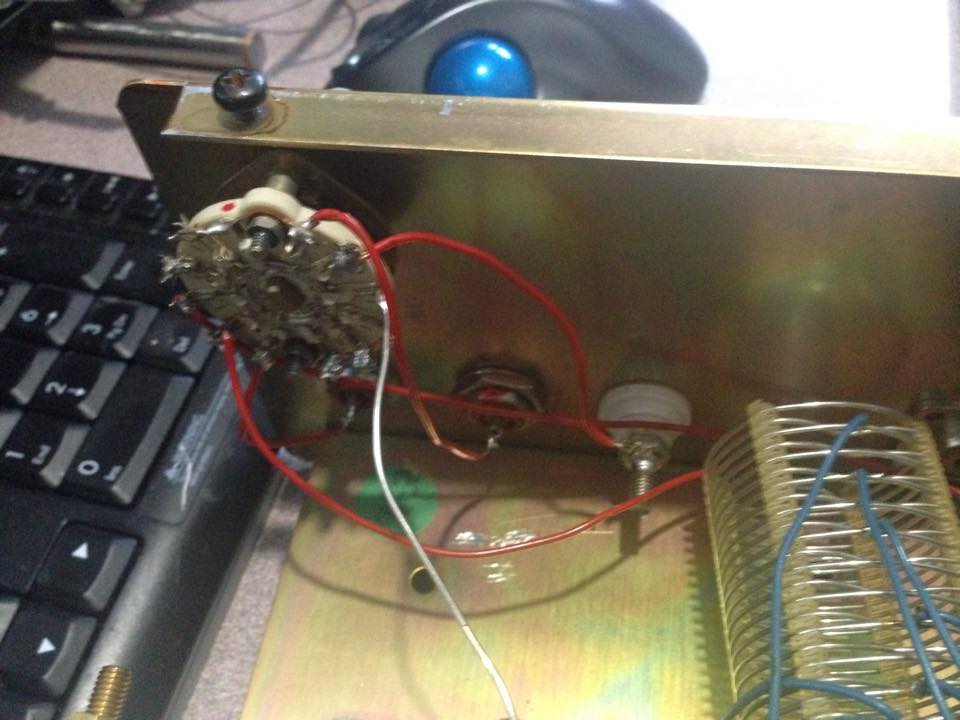
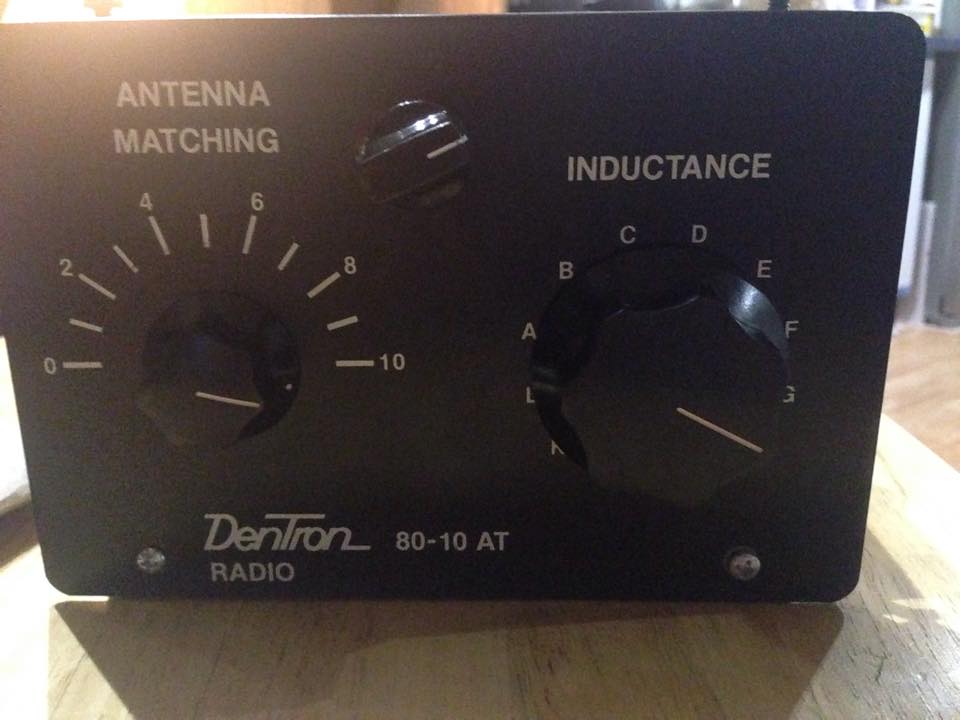
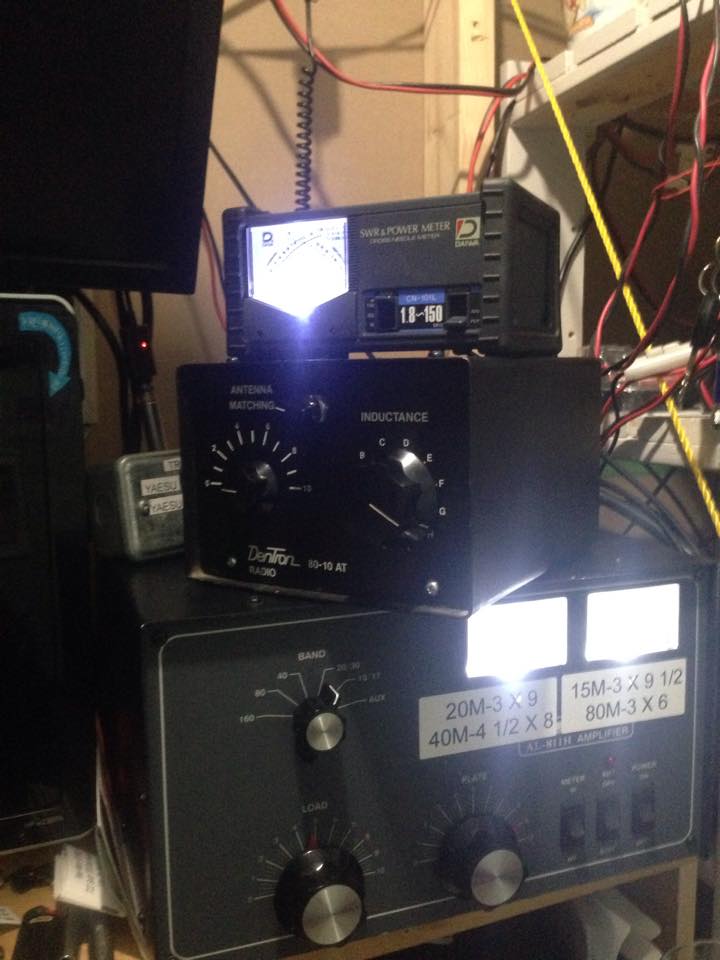
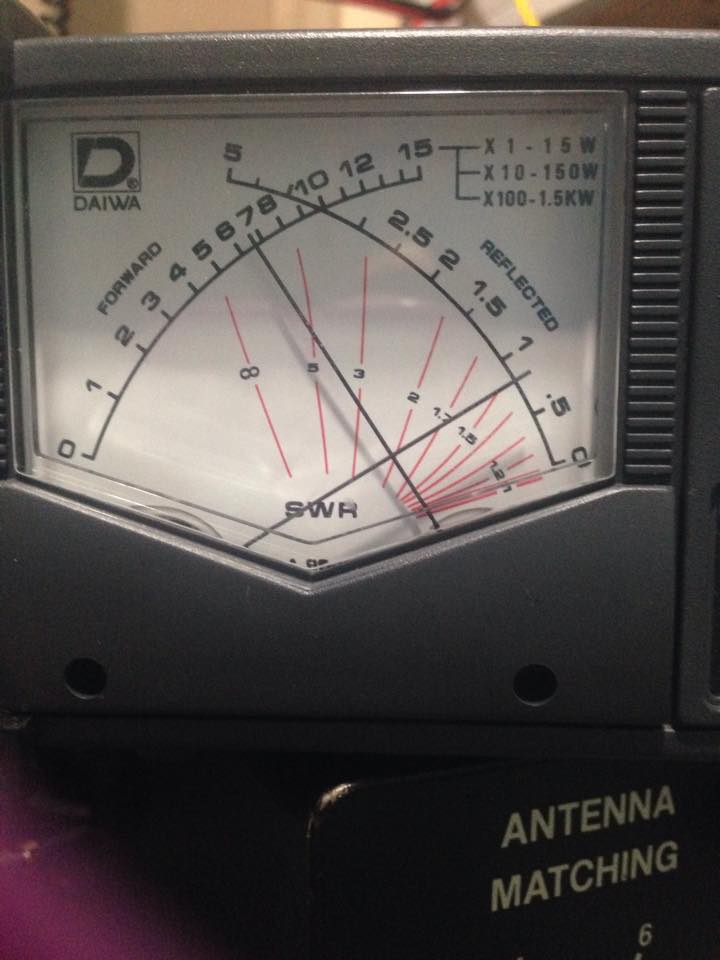
VY1MK Mark
Dummy load and antenna switch (click on small pictures)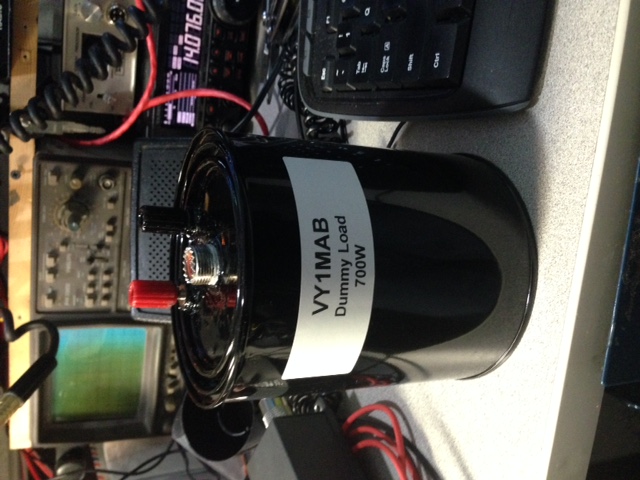
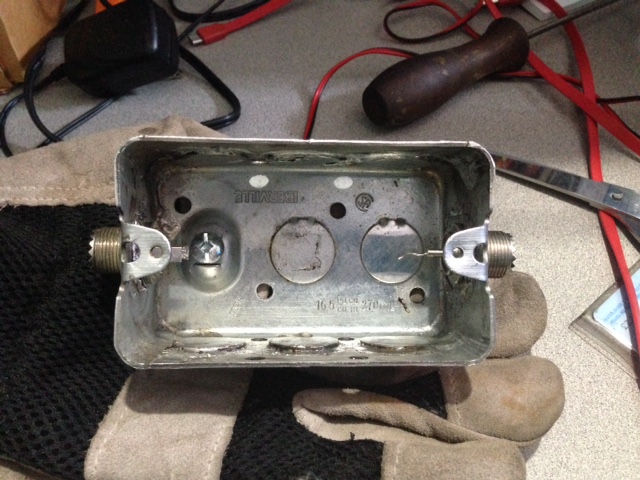
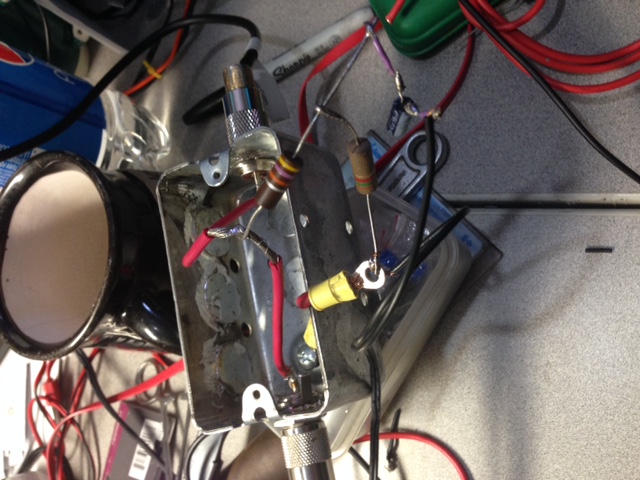
VY1MK Mark
Franken Antenna (click on small pictures)